






By Dana Rieck
Of The St. Louis American
With less than three weeks until St. Louis elects its next mayor, both Alderwoman Cara Spencer and St. Louis Treasurer Tishaura Jones are campaigning like never before as they head into one of the most competitive mayoral elections in the city’s history. With the new voting system in the primary, the two candidates with the largest vote totals, regardless of party affiliation, moved on to the general election. Because of this, April’s mayoral ballot now features two democratic candidates —

Tishaura O. Jones
Alderwoman Cara Spencer and St. Louis Treasurer Tishaura Jones — instead of one Democrat (essentially guaranteed to win the general election) and one Republican. This means the April 6 election is either candidate’s to win.
Federal COVID-19 funding
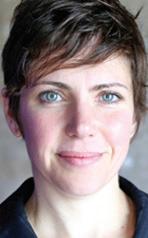
Cara Spencer
Whoever assumes office will have unprecedented monetary resources at her disposal when around $500 million in federal funds
is distributed to the city beginning in mid-May as part of the American Rescue Plan Act passed by Congress last week.
Jones said the things that will be top of mind for her if elected mayor are renter and As news of $500 million federal allocation to be distributed to city
St. Louis Mayor Lyda Krewson said Monday that her office is “developing a framework of areas of potential investment” that include the revenue deficit, the housing crisis, derelict buildings, public safety upgrades and the 2030 jobs plan released in December by the Greater St. Louis, Inc.
See

By Sylvester Brown, Jr. Of the St. Louis American
“Don’t ever say you can’t do something until you’ve tried.”
Dr. Angela L. Brown said those words of wisdom from her grandfather, Alex G. Brown, stays with her. Brown is Vice Chair for Health Equity and Professor of Medicine, Cardiovascular Division at Washington University School of Medicine in St. Louis. As an internal medicine physician who restricts her practice to hypertension, she directs the Hypertension Clinic at the medical school.

Adhering to her grandfather’s guidance, Brown is continuously persuading her patients to engage in healthier lifestyles that can decrease the risk of developing hypertension or diabetes, risk factors for COVID-19 infection. This means boosting the immune system, exercising, eating healthy, reducing stress, getting plenty of sleep and other efforts to ward off or boost heart health if someone has contracted the coronavirus. Research has shown that COVID-19 can damage the heart of individuals who’ve had even mild cases and have recovered from the virus.
When asked about the guidance she received as a child that fueled her trajectory in the medical field, Brown immediately credited her late grandfather:
“He believed that you don’t know you can’t do something unless you try it. That was his attitude.”
The simple but meaningful lesson came when Brown was about 12 years old. One day, while her mother and grandmother were away, Brown was tasked with making her grandfather lunch. There was no sandwich bread in the house that she could toast so her grandfather told her to put
By Derwin Johnson Of The St. Louis American
St. Louis
Circuit Attorney Kim Gardner,
in a CBS News “60 Minutes” interview on Sunday said she’s not backing down or kissing the “ring of the status quo” in her pursuit to make good on her campaign promise to rebuild the justice system.
n “We as law enforcement have to hear the cries for help in the community and deliver. That’s why I’m not going to back down.”
City seeks to fill 72 job vacancies
By Dana Rieck Of The St. Louis American
As inmates threw burning furniture out of broken windows on the fourth floor of the
Correspondent Bill Whitaker opened the segment with, “St. Louis has one of the highest rates of police shootings in the country and Black mistrust of police runs deep,” So when an African American woman won the top prosecutor’s job, first in 2016 and again this past November, many hoped for change. Gardner, a Democrat in a red state promised to hold police to account. Instead, she has run into relentless opposition from the police union and its powerful allies.”
“We as law enforcement have to hear the cries for help in the community and deliver. That’s why I’m not going to back down,” said Gardner.
She described the battles she’s fought with the St. louis Police union. She described what she called the differences between police and the police union.
“We work well with everyday police officers, every day. But what we have is a police union who basically injects fear and misinformation in the police department,” she said.
However, Jeff Roorda, a spokesman for the union described Gardner as not being a “partner with law enforcement.” Roorda, a former police officer, was fired in 2001 after
falsifying a police report. He said, “She’s a prosecutor that wants to second guess everything law enforcement does and find fault when there is no fault to find.”
“The people of St. Louis overwhelmingly voted me in to do my job to reform a system that we all know is beyond repair,” She said. “It needs to be dismantled and rebuilt.”
– St. Louis Circuit Attorney Kim Gardner Tells ‘60 Minutes’ ‘I’m not going to back down’
The 60 Minutes segment also included interviews with former police Sergeant Robert Ogilvie and Alderwoman Megan Green.
“We’ve been arresting people and locking them up…for decades and it hasn’t worked and it’s not working, so it’s time to do something different,” said Green.
Green reportedly said that when she questioned the police budget the union mounted a campaign to unseat her. “It was to send a message to other elected officials, like don’t you dare. Don’t you be talking about how much money goes into the police department, because if you do, this is what we’re going to
and found that
of the
is that they are only allowed out of their cells for one hour a day to shower, make phone calls and participate in other activities.
“We were able to talk to detainees that represented the various wings, and we visited every floor,” he said. “I think that the concerns they registered in the media after the uprising were the same things that they told us. Their concerns were consistent across the board — no movement and no visitation, they simply felt isolated,

Kirk Franklin gets after son’s video stunt
After 33-year-old recorded and posted to Instagram an expletive-filled argument with his father, gospel legend which went viral, Kirk Franklin issued an apology for using inappropriate words, explaining he felt dis respected. What may have been meant to call Kirk out and embarrass him brought out com ments and memes supporting the famed singer. One meme, original source unknown, used some of Kirk’s hits to explain the situation. It

reads, in part: “Kirk Franklin’s son realized real quick he didn’t want a Revolution cause Kirk Franklin was ready to Stomp and make him say Something About the Name Jesus. He thought because Kirk had Silver and Gold he could blast him on social media. I hope he understands we love Kirk and its still Gonna Be A Lovely Day. Hopefully his 33-year-old son will have a Brighter Day and Smile.”

And now it seems that Kerrion is the one defending his actions, posting a separate video where he says, in part, “I’m in no rush to tell the media lies. So I’m getting hundreds and hundreds of emails, phone calls, texts, comments, everything right now,” he said.
Netflix password argument leads to knife assault
It may be time to forget your friend’s or relative’s Netflix password. Although it may have ignored the practice for years – of customers sharing passwords with friends
and family to keep them from having to purchase the streaming service, Netflix may be pressing the rewind button. It is testing a new policy on some video sharers, prompting customers onscreen to sign up for a separate account if they are not watching in the presence of the paying customer, as first reported by Streamable.com. While it is unclear how they would be able to verify exactly who is who, CNBC reports that about 33% of Netflix customers share their password, according to Magid research. Netflix plans range from $8.99 to $17.99 per month.

And on March 13, St. Louis police say an argument after a nephew was caught reportedly attempting to steal his 50-year-old uncle’s Netflix password escalated into an assault, when the nephew reportedly grabbed a kitchen knife and cut his uncle on the nose before fleeing the house. The uncle’s wound was treated at a hospital.
Fans send goodbyes to…
Singer Reggie Warren, one of the origi-
nal members of the 80s R&B group TROOP (which stands for Total Respect Of Other People), who died March 14 at age 51 at his home in Pasadena, California. Group members included Warren and childhood friends Steve Russell, Allen McNeil, John Harreld and Rodney Benford. A few of their hits include “Spread My Wings,” “All I Do Is Think Of You,” “Mamacita,” “My Heart” and “Still in Love.” Family members said Warren had some health issues and that his death was not believed to be COVID-related.
Actor Yaphet Kotto, who died at age 81 on March 14. Kotto performed on Broadway in “The Great White Hope,” in movies and in television. Some of his best-known work was in the movies “Alien,” “Live and Let Die,” and “Raid on Entebbe.” Kotto’s last and longest role was portraying Al Giardello on “Homicide: Life on the Street.”
Sources: AceShowBiz, CNBC, KSDK, Instagram, Netflix, People, Streamable.com, TMZ, Variety



















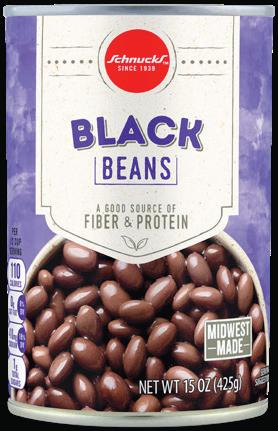











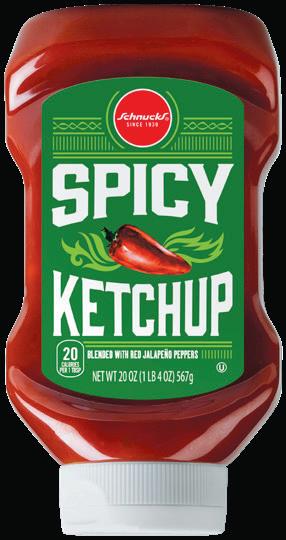



By Sophie Hurwitz
Of The St. Louis American
On April 6, 10 candidates will file to fill three spots on the St. Louis Public Schools Board of Education. The new Board members will be faced with supervising the “right-sizing” of the district, as six schools are shut down, and as the previous Board recently decided, will likely be supervising a moratorium on new school construction.
On March 10, the candidates convened for a virtual forum, moderated by the League of Women Voters of St. Louis and co-sponsored by the American Federation of Teachers Local 420, the teachers’ union that serves the city of St. Louis. There had been one prior forum, sponsored by community organization Ms. Tilly’s Corner, on March 3.
Only one candidate, Natalie Vowell, is an incumbent defending her seat — while some of the other nine candidates, such as veteran Bill Haas, and eight-year board veteran David Jackson have served on the board before, none are current members.
In 2019, membership of the Board was restored to a locally-controlled, elected position, after being made up of three state-level appointees for 12 years due to low test scores and struggles around accreditation in the district. After the district regained full accreditation in 2017, however, the Board expanded and became a group selected through an at-large election once again.
Board members are elected at-large to four-year terms. Current Board President Dorothy Rohde-Collins and Vice President Susan Jones will not be seeking re-election. The Board has seven members. Aside from Vowell, Jackson, and Haas, other candidates who have filed include Antoinette (Toni) Cousins, Matt Davis, Emily Hubbard, David Meredith, Daffney Moore, J.L. Mendoza Quinones and Alisha Sonnier.
Five of the ten candidates are Black, in a school district that serves an 80% Black student population. All live

Congratulations goes out to the Ferguson-Florissant School District building-level spelling bee champions who competed in the recently held Greater St. Louis Spelling Bee. The champions, who are shown with their district awards, are (l to r) Mya Porterfield (Halls Ferry), Hadi Mutan (Cross Keys Middle School), TJ Chatman (Berkeley), Precious Stokes (Ferguson Middle School), Anneleise Arman (STEAM Academy - District Champion), Kennedi Harris (Griffith), and Skyla Ervin (Lee-Hamilton).
within the city of St. Louis, and many have children that went through St. Louis Public Schools. A few, such as Toni Cousins, went through the SLPS
school system themselves: “I was one of the most troubled students growing up, gave my mom and dad trouble of course, but that helped me be the per-
son that I am today and I thank them for that,” Cousins said at the forum on March 3. Since then, though, she noted that every single SLPS school
she attended — aside from Ames Middle School — has been closed. She ran an alternative school program at Beaumont for children who had been kicked out of standard schooling, serving about 200 students, and now works with the Missouri Department of Housing and Development as an outreach coordinator.
Alisha Sonnier, another Black woman running, is also the youngest candidate, at age 25. She became heavily involved in activism during the Ferguson uprising in 2014, and struck a tone of advocacy for student involvement on the board itself. “I haven’t even had my 10 year high school reunion yet,” she noted. “So I’m a lot closer to the students. It’s important that we’re not speaking for our students, we’re speaking with them.”
Daffney Moore, an instructor with Harris-Stowe State University and chief Opportunity Zone officer with the St. Louis Development Corporation noted in a press release shared with Cousins that she hopes to not only address education while on the Board, but also “address safety concerns that plague St. Louis, improve our housing stock, and [create] new and sustained streams of revenue for SLPS.”
Moderator Louise Wilkerson with the League of Women Voters said that the “over 80” questions she received from the community for the forum on the 10th showcased the community’s current concerns: in particular, she received many questions regarding the charter school moratorium and regarding educational outcomes in St. Louis Public Schools. All candidates asked said that they supported a moratorium on new schools in the city. Regarding educational outcomes, plans varied: paying teachers better, providing better resources for the teachers and administrators, and “stepping outside of the boardroom” as Hubbard put it to see what those who learn and work in the schools need.
All candidates’ names will be on the April 6 ballot in the city of St. Louis.

Destinie Jones had big plans when she took on the role of President of the Association of Black Collegians at Maryville University. Then COVID-19 hit the U.S. and all of her plans required a new approach.
Destinie saw Zoom as an opportunity rather than an obstacle. She created a virtual event with Black student organizations on other college campuses to collectively talk about student experiences and offer support and advice. She found utilizing Zoom made collaboration more accessible, manageable and inclusive.
Destinie’s bold response to the pandemic brought a new level of creativity and intentionality to our campus. She was challenged as a leader but rose to the occasion and Maryville stands with her.
Learn more at maryville.edu/bold
Last weekend’s CBS “60 Minutes” episode highlighted the power of the St. Louis Police Officers’ Association (POA)—or, the city’s white police union—in stifling calls for police reform. In the episode, St. Louis Prosecutor Kim Gardner spoke movingly about how, when she has tried to carry out her campaign promises for reform she has faced relentless pushback from the POA. She has been faced with death threats, smears against her character, and piles and piles of letters saying she “should be hung up from a tree…by the KKK” and similarly disturbing threats.
These attacks have been exacerbated by the police union’s intemperate, inciteful comments that call her a cop-hater. They have lobbied strenuously against her, the first Black woman to be elected St. Louis’ top prosecutor. These smears come from the POA’s leadership, not the professional officers on the force with whom she continues to work.
When interviewer Bill Whitaker asked Gardner if the threats frightened her, she responded stoically: “Well, I signed up for this.” What she really fears, she said, is that one of her loved ones might be hurt because she took this job.
When Jeff Roorda and the Police Officer’s Association threaten reform-minded politicians, such as Megan Green, who questioned their budgetary allocations or assert that Gardner is unqualified to do her job because she attempts to ensure that police officers who kill are not given the power to continue killing, they are working from an old playbook.
The ascendancy of the current power of police unions gained considerable momentum during the “law and order” era of the 60s through the 80s, and the age of reckless, shameful and destructive mass incarceration that was supported by Democrats as well as Republicans.
The influence of police unions grew as they proclaimed themselves as the most important safeguard against greater discord. They have increasingly functioned less like an ordinary union — something organized for the protection of the basic rights of workers — and more as an instrument for the protection of white police abuse, and even killing with impunity.
However, the increased use of video on mobile phones, the heightened reckoning on race in the aftermath of multiple high profile police shootings of Black people and the huge costs of civil judgements that need a lower level of proof for conviction, have put some of this undisputed power police unions have enjoyed in jeopardy.
The Ethical Society of Police (ESOP), the Black police union of St. Louis, has advocated against racial discrimination and racist violence within the police departments of the metropolitan area since 1972. Though the Ethical Society

By Ben Jealous
President Joe Biden has nominated extraordinary women of color to high-level jobs in the Biden-Harris administration. Many of them are being attacked and smeared by the far right. That’s why People For the American Way has launched the #HerFightOurFight campaign.
We cannot let far-right forces silence and smear these trailblazing women who are eager to advance the progressive values that Americans voted for when we put Joe Biden and Kamala Harris in the White House.
Our first ad tells the story of Vanita Gupta, who has been nominated for associate attorney general.
was not mentioned in the “60 Minutes” segment, their role and outspokenness have been crucial in highlighting exactly how much the Police Officer’s Association has used implicit and explicit threats of violence by some police officers as a cudgel against ordinary St. Louisans.
Their insidious effect on public opinion became even more evident earlier this week.
When jury selection began in the trial of two St. Louis police officers who violently beat one of their own undercover colleagues (a Black police officer) in 2017, potential jurors were asked if they had seen the “60 Minutes” episode. If they had, they were eliminated from the pool as biased.
The final jury selected in this case is 100% white.
The incident in which the two white officers gleefully attacked one of their own occurred during the 2017 protests after the acquittal of Jason Stockley, a white police officer who killed a Black man at point-blank range after stating, “I’m going to kill this motherf*cker.” In that case, too, the Police Officer’s Association stood firmly and unquestioningly on the side of Stockley, even raising money to pay his bail.
To achieve a St. Louis that doesn’t experience the highest rate of killings by police in the country, we must support measures advocated by Gardner, and the ESOP, and everyone who is fighting against those who would protect the current unjust system, including the POA and other enablers that are permissive of police violence and abuse.
By Maureen Brinkley
Since 1987, the U.S. Small Business Administration (SBA) has celebrated Women’s History Month to recognize the role women entrepreneurs play in building and strengthening our local and national economies. Women have transformed the face of entrepreneurship across America in both urban and rural communities. This is especially true while our nation confronts the challenges of the COVID 19 pandemic.
Women entrepreneurs continue to play a greater role in creating new jobs and economic activity across the country. According to the National Association of Women Business Owners, nearly 12 million businesses are owned by women, generating $1.7 trillion in sales, and employing over 9 million people. Together, these businesses represent one of the fastest growing sectors of our economy. As the first woman to hold the position of district director for SBA St. Louis, I’m especially proud of women business owners in eastern Missouri. The entrepreneurial spirit of women like Gloria Carter-Hicks and
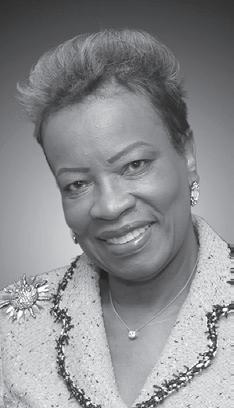
salon owner Tameka Stigers is the fuel that fires my heart to continue serving the SBA. Both women are examples of how being faithful in something small can lead to the blessing of something larger. Gloria grew up in an entrepreneurial family, having helped her father run his grocery store in Alton. After college graduation and experience in corporate positions, Gloria began attending free start-up courses offered by SBA resource partner SCORE. In 1999, she launched her consulting business, HicksCarter-Hicks, LLC. As the business grew, she took advantage of every class and networking opportunity offered by the SBA, including the 8(a) Business Development program and the Emerging Leaders executive level training for entrepreneurs in underserved markets.
Locs of Glory, a St. Louisbased beauty salon, is an
example of a business that started in a home and with the help of an SBA 7(a) loan is now located in a 3000-squarefoot salon and spa. Owner Tameka Stigers maximized use of services offered through the SBA and its resource partners. She is a Women’s Business Center Wall of Fame Inductee, and like Gloria, a graduate of the SBA’s Emerging Leaders Program. In 2020 she was invited to the White House to meet with the President and share her experience as a minority business owner. Her business gained national media attention through a feature in Black Enterprise Magazine.
Tameka is a past recipient of the SBA St. Louis Minority Owned Small Business of the Year award.
I’m often asked why I still work after more than 50 years with the SBA. The answer is so easy. My heart is still filled with desire to help and inspire women entrepreneurs to never give up on their dreams. And as Gloria Carter-Hicks and Tameka Stigers so powerfully illustrate, the SBA provides a wide array of tools that help power those dreams.
Gupta was a young civil rights lawyer in her first job after law school when she heard about a gross injustice in the small town of Tulia, Texas. Almost 40 people—nearly all of them Black—had been wrongly arrested, convicted by all-white juries, and jailed on bogus drug charges. It was a big percentage of the Black community in that town. It was devastating to the individuals and their families. And they saw little chance to get justice.
But then Gupta, who was working for the NAACP Legal Defense Fund, took up their cause. She exposed the injustice and won their freedom. She even got them pardons from a Republican governor.
Gupta has been fighting for equal justice ever since. She led the Justice Department’s Civil Rights Division for part of the Obama administration. And for the last few years she has led the Leadership Conference on
Civil and Human Rights.
But right-wing groups are running a more than milliondollar ad campaign to smear her. And unprincipled politicians like Ted Cruz are attacking her over her civil rights work in the Obama administration.
Our #HerFightOurFight ad is narrated by Shirley Sherrod, a former government official who lived through a dishonest smear campaign that twisted and distorted her words to try to destroy her career. She sees the same thing happening to Gupta and other brilliant women of color, and she’s speaking out.

It is important to defend women like Vanita Gupta who are being unfairly attacked. But this campaign is about more than these specific women. It is about all of us. These women are ready to make change happen—the change we voted for. They represent the kind of inclusive multiracial and multiethnic society we are building together—and the Biden-Harris administration’s commitment to building one of the most diverse governing teams in our nation’s history.
I am sad to say it is not surprising that many of Biden’s nominees are being attacked by people who see that vision of our future as a threat. It is not surprising that the descendants of the Jim Crow south whose power is threatened by people of color turning out to vote are passing new laws to try to stop
Prop E for equity in Riverview Gardens schools
As a parent and attendance secretary of children in the Riverview Gardens School District, I strongly believe my children deserve access to the same resources and opportunities as children in more affluent school districts such as Clayton, Ladue, Kirkwood and others.
That is why I am voting YES to Prop E. Children in Riverview Gardens deserve Educational Equity. If the state will not provide adequate funding and resources to our babies, the community must come together and ensure our children do not fall through the cracks.
After all, a strong school district leads to a stronger community. I hope my neighbors and my community will support the children of RGSD by voting
yes on Prop E. Marhari Buckner Glasgow Village
Where are our COVID vaccines?
When the COVID 19 vaccine first became available in the state of Missouri, I registered with the county I reside in, and with two major hospital chains in my St. Louis community. As a result I receive weekly updates telling me there are over 30,000 persons registered on each of these lists, and there is not enough vaccine for all of us. Although I am over 65, the weekly email encourages me to find the vaccine elsewhere because no provider anticipates having a vaccine for me any time soon!
Then the state of Missouri announced that teachers are now approved to receive the
us. It is not surprising to see racism and sexism used as a political weapon. We know that progress is often met with backlash. Our long march toward justice has sometimes been beaten back temporarily—on the bloodstained Edmund Pettus Bridge, in courtrooms where whiteness trumped justice, in state legislatures where the Constitution’s promise of equal justice was repeatedly betrayed, and in the U.S. Senate, where the filibuster was used to delay passage of civil rights laws.
Time and again, we have overcome, often led by courageous Black women and other women of color whose leadership was frequently overlooked and overshadowed.
Today, we fight for Vanita Gupta and Kristen Clarke, a brilliant Black woman nominated to head the Justice Department’s Civil Rights Division, and other brilliant women who are ready to help President Joe Biden and Vice President Kamala Harris fight for a country that comes closer to meeting our ideals of freedom, equality, justice, and opportunity for all. #HerFightOurFight Ben Jealous serves as president of People For the American Way and People For the American Way Foundation. Jealous has decades of experience as a leader, coalition builder, campaigner for social justice and seasoned nonprofit executive. In 2008, he was chosen as the youngestever president and CEO of the NAACP. He is a graduate of Columbia University and Oxford, where he was a Rhodes Scholar, and he has taught at Princeton and the University of Pennsylvania.
All letters are edited for length and style.
vaccine. The St. Louis Public School district excitedly shared this information with all of us on teaching staffs in the city. But it doesn’t matter how many times I qualify to be at the front of the vaccination line if there are no vaccines available in St. Louis city or county. Telling me to research availability online, drive four hours one way to be inoculated; and then repeat the trip for the booster is no solution! The residents of St. Louis city and county pay taxes, too. We, too, are Missourians. Not all of us have the leisure time and transportation means to travel across the state for this vaccine. Missouri, SHOW ME you care about us all! Get the vaccine out in St. Louis city and county!
Jane Maxfield St. Louis




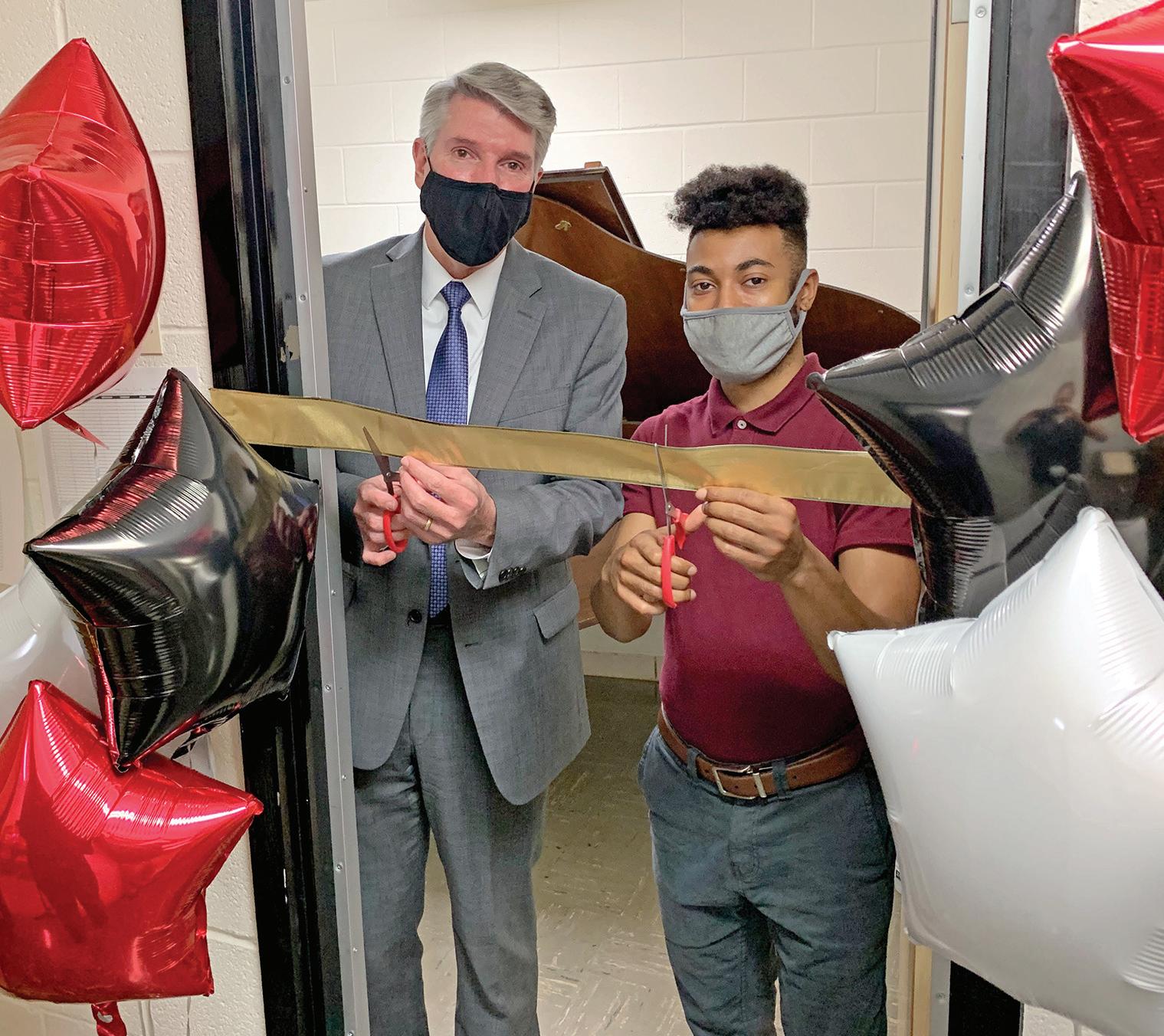
The St. Louis American Staff
In celebration of the life of the late Dr. Dorothy Elizabeth Steward, and in recognition of her passion and appreciation for music education, the University of Central Missouri (UCM) has dedicated a music practice room where students can continue working toward their dreams and developing their performance skills.
The dedication took place the same day Dr. Steward would have celebrated her 93rd birthday. The longtime Clinton, Missouri resident leaves behind a legacy as a devoted mother of eight children, decades of civic service and
religious and church activities.
“Being able to celebrate her memory through this recognition ceremony on her birthday makes this a very special opportunity for our music students, faculty and the entire UCM family,” said Courtney Goddard, vice president for Advancement and External Engagement and Executive Director, UCM Alumni Foundation.
Dr. Steward is the mother of David Steward, chairman and founder of World Wide Technology, one of the largest Black-owned businesses in America. He is also a UCM Graduate.
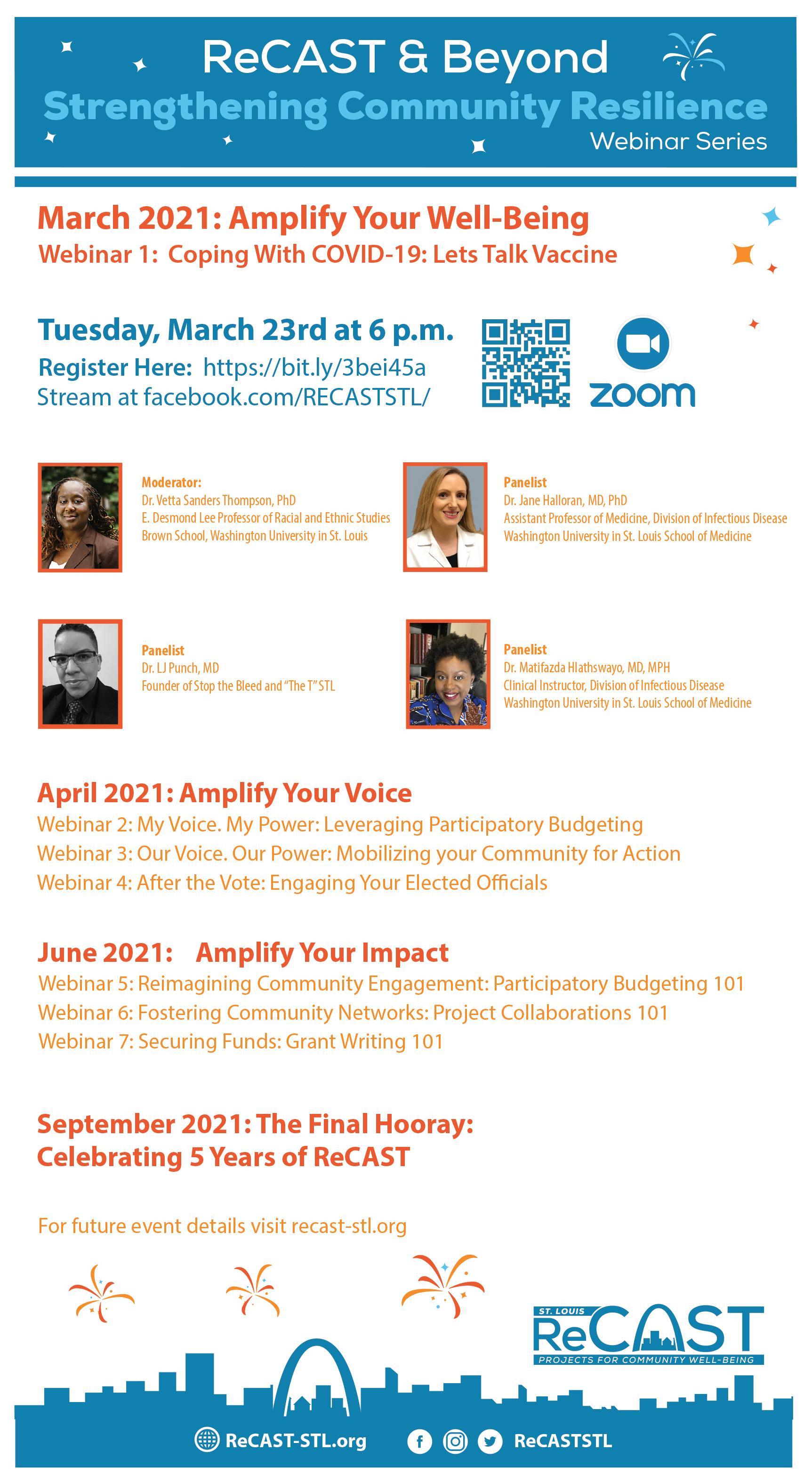
By Jamala Rogers For The St. Louis American
The threat is real. The vote is under attack. Two narratives are duking it out: voter fraud vs. voter protection. What’s becoming a tit for tat in a high stakes match must end in a resounding victory for voting rights. It should be more permanent than the Voting Rights of 1964.

At a time when St. Louis democracy defenders are looking at ways to increase the embarrassing voter turnout of the Primary Election, we must fight the blatant efforts of the conservative right to suppress the vote. The former president played his part in amplifying the lie about voter fraud and working his base into the frenzy that resulted in a failed coup on January 6. Recently, Judge Brian Wimes issued a disappointing decision to uphold Secretary of State John Ashcroft’s to dismiss a lawsuit demanding redress from voter obstacles in the face of COVID-19. (In full disclosure, my organization was the lead plaintiff in Organization for Black Struggle v Ashcroft. ) Voter protection groups teamed up with community organizations to file a lawsuit that would protect safe and secure elections during a pandemic. Tit.
The U.S. House of Representatives passed H.R.1, the For the People Act last week. It is a sweeping reform bill by the Democrats that includes many provisions from expanding voting rights to limiting partisan gerrymandering. The bill would neutralize and nullify bills introduced by the GOP in state legislatures. Tat.
According to the Brenner Report, Republicans have introduced 253 bills in 43 states that smack of voter suppression. While federal law trumps state law, there’s no guarantee that H.R. 1 will pass the Senate. GOP lawmakers are lying in wait to filibuster and kill the bill. Tit
Last November, St. Louis voters passed Prop D in a big way. The ballot initiative moved voters closer to selecting who we want to run in elections. Opponents of approval voting think the results of the March 2 Primary blew up in the faces of supporters. Had the old voting system been in place, Tishaura Jones would’ve won the primary and the General Election would be a done deal. But this has never been about one election or one candidate. It’s about maximizing democracy for real political representation. Tat.
Over the next few years, this country is going to look like it’s been in a fight. The wrestling around voting rights is about to escalate to an ugly brawl. We who believe in democracy must come out the victors.
Demographics are changing. Voters are woke. Democrats have some power in Congress. To many, these are good things to have going into a fight for democracy. However, these same factors represent gasoline to fuel the domestic terrorists hiding behind the confederate flag. They have vowed to come back with a vengeance in 2022.
As the city mobilizes for the General Election on April 6, it’s a dress rehearsal for both knocking down barriers to the polls and inspiring voters to use the power of the vote. The stakes are just as high on the local level For the People as it is on the state and national levels.

Continued from A1 do to you.”
When asked about the prognosis for reform she said, “It’s really difficult. They fight reform tooth and nail and the tactics they use against elected officials are used to quell dissent…it scares a lot of folks.”
“I wish there was an easy fix to this thing. But I think it’s gonna take a lot of people crossing the isle and changing,” said Ogilvie, who quit the police force last August.
“I believe that most of the officers that come out of the academy…they want to come out here and do a good job. But the reality out here is this, you’re basically judged by how well you are at making arrests. That’s the bottom line.”
Gardner, the first Black female Circuit Attorney who was elected to a second term in a landslide, showed a stack of some of the hundreds of letters she’s received – hate mail, including name-calling, racist slurs and death threats.
Continued from A1
mortgage assistance, small business assistance, and money for homeless services.
“We intend to try to have a transparent and community-focused process and not just be top-down — but get some community input on how to spend the money,” Jones said. The treasurer also said she believes it’s important that people are aware that the funds are going to come in two payments, with the first payment in about 60 days and the next one in about a year from now. She also intends to allocate a small portion of the money for oversight to ensure equitable allocation of these funds.
“This is an unprecedented

Gardner said that she “signed up for this” and that “What frightens me is, now, that it’s calls to my family, and I’m afraid that a loved
amount that’s on its way to our city and we need a mayor that’s ready to disperse it with an eye towards equity and the experience to move quickly,” Jones said.
On Tuesday, Spencer released her own plan of how she would handle the $500 million if elected mayor. In that statement, she noted this investment in St. Louis is more than five times the national average, because the amount was calculated using the city’s poverty rates, unemployment and housing quality — and not just population.
“The enormity of the aid per capita is a real indication and acknowledgement of the challenges that our city does face,” she told The American. “That includes the issues that determined the federal package — poverty, housing stock,
one may be harmed because I took this job.”
Gardner said she’s going to continue the path of reform because that is what she was
vacancy, a stagnant economy.”
Spencer’s plan calls for putting the money toward long-term goals such as lowering vacancy and inequality, increasing workforce development resources and reversing declining population levels and stagnant economic growth.
“If I’m elected mayor we’re going to use that money to invest, of course, in the shortfall that COVID caused our community, but we’re also going to invest it in long-term growth,” Spencer said. “And that looks like investing in those issues, those areas, those deficits, that really drove the enormity of the package itself.”
Debates
There are two upcoming televised mayoral debates planned. The first one will

elected to do.
“Let’s start addressing the pain. Let’s start addressing and really understanding the communities,” she said. “And
be broadcast on FOX 2 and KPLR 11 at 6 p.m. March 23. The candidates will appear live and in-person at the television station’s studio.
The debate will be moderated by anchor Jasmine Huda.
In addition, the debate will feature a panel of local media representatives.
Jones said she is prepping for the debate with her team the same way she has since the beginning of this election, with a focus on crime and public safety, COVID-19 recovery and how to move St. Louis forward.
The second live debate was created through a partnership of The St. Louis American, 5 On Your Side, Nine PBS and St. Louis Public Radio. It will be broadcast at 7 p.m. on March 30 at the Nine PBS’s Bayer
those people are hardworking individuals who are not anti-police. At the same time, they want fairness and justice under the laws.
Studio and will be available across all stations and livestreamed on ninepbs.org, stlpublicradio.org and ksdk. com.
5 On Your Side political editor Casey Nolen, St. Louis Public Radio’s political reporter Rachel Lippman and Nine PBS’s senior producer Ruth Ezell will moderate the debate.
Spencer said she believes the importance of this federal package will be on viewers’ minds heading into these debates.
“I’m looking forward to it, I think the more people who tune in the better off the city will be,” she said.
Campaign finance
Spencer and Jones will file their final pre-election
St. Louis Circuit
Attorney
Kimberly M. Gardner watches an episode of “60 Minutes” with family members at their funeral home business in the city’s Greater Ville neighborhood Sunday night March 14, 2021.
L to R - Kim’s daughter Tea’ Bowie, cousin Courtney Lemon, Kim’s mother Sharon Gardner and Kim’s sister Jennifer Gardner.
finance reports March 29, until then only contributions of $5,000 or more are reported and available through the Missouri Ethics Commission. Since the primary, Jones’ campaign has received $20,000 from PACs who previously supported Aldermanic President Lewis Reed in his bid to become the city’s next mayor. Reed came in third in the primary, having received just over 38% of the votes. Those are TheLouPAC, which gave $10,000 to Jones’ committee 314 Forward on March 8 and Leadership Counts, which contributed $10,000 to that same committee on March 10. As for Spencer, consumer packaged goods company Post Holdings contributed $10,000 to her PAC, Gateway to Progress, March 5.

Continued from A1
they were uncertain about the COVID pandemic and how it might impact them.”
The 13 urgent recommendations included things such as increasing dayroom recreation, implementing tablets for virtual visitation, upgrading the electronic security system and constructing maximum security gates, auditing the length of stay of current detainees and creating a civilian oversight board for the corrections division — that being the task force’s highest priority issue, according to Gray.
“Just as police cannot investigate police, we do not believe it would be proper or transparent if correctional staff interviewed or investigated correctional staff about incidents that take place in the facility,” Gray said. “So, we thought that was the number one issue.”
The full task force report can be accessed at https://bit. ly/3bNvqFS.
In a joint statement, Krewson and Public Safety Director Judge Jimmie
Continued from A1 a hamburger bun in the toaster.
“It won’t fit,” the adolescent Brown insisted. “Try it,” her grandfather insisted.
“I put the bun in the toaster and low-and-behold, it fit,” Brown said laughingly. “He didn’t fuss, he just said: “Now see, you hadn’t tried.”
That simple lesson complemented her uncomplicated life. Brown, an only child, grew up on a farm in Sherrill, a small town in Jefferson County, Arkansas. The city with a population of around 87 people, is about the equivalent of 12 city blocks, Brown said. The farm had been in her family for generations. Before his death, Brown’s great grandfather left his wife and three children about 20 acres of farmland.
At the age of 24, her grandfather, Alex, decided he and his wife were going to make their living as farmers. By the late 1940s, the couple had about 1,500 acres of land where they grew mostly cotton. Today, the family manages the farm and grows rice, corn, and soybeans.
Brown fondly recalls a childhood where her playground was hundreds of acres of land, where all the neighbors knew one another. She was raised in a household with no cable TV, a mother, grandmother, and great grandmother who made sure she learned her alphabets and could count and read before entering kindergarten. She loved to read, play crossword puzzles, read Nancy Drew novels and other heady material:
“I was probably one of only a few kids who had a subscription to Science Digest.”
Brown’s mom was a schoolteacher. Her father worked remotely in construction. She reserves the title “Daddy” for her grandfather, Alex, whom she emulates:
“I’m a risk-taker because my grandfather was a risk-taker,” Brown said. Her grandfather nurtured her independence. He was the one who taught her to drive before she could see over the steering wheel. By the 9th grade, Brown was driving tractors and she often took the family truck to school in Pine Bluff about 16 miles from her farm.
Brown credits her upbringing for her outlook on life:
“My grandparents had a lot of mother-wit, a commonsense way of doing things. My grandfather was very good at math, he ran his own business,” Brown recollected. “As a child, I was probably treated more like an adult. I was always motivated to do things so I never thought I couldn’t do, or couldn’t be, whatever I wanted.” Brown knew she wanted to be a doctor by the seventh grade:
“Maybe it was the technology that I was reading about in Science Digest. I couldn’t see myself as a biologist, but I could see myself as an engineer working in bio-mechanics
Edwards thanked the task force and said that they will immediately begin to review the recommendations — adding they believe they have begun working on some of them already.
Before these recommendations were made, officials approved a $1.5 million budget transfer Feb. 17 to repair the broken locks at the St. Louis City Justice Center. Edwards said those broken cell locks was one of the main reasons the inmates were able to take over the fourth floor.
As for the job vacancies now being filled, Corrections Commissions Dale Glass submitted an emergency request just days after the protest to Comptroller Darlene Green. In that request, he asked her to approve a $1.2 million contract with Whelan Security Co. for private security services at the CJC.
Glass wrote the money would provide 15 additional security guards working every day at the CJC until the end of the year.
On Feb 16, in an email chain regarding the private security contracts, Green wrote that she could not approve the request for outside private
on things like artificial limbs.” Brown enrolled at Southern Methodist University to study electrical engineering with bio/ medical engineering focus. Her decision was purposely strategic:
“Even though my goal was medical school, I deliberately looked for engineering programs that also had a pre-med base. So, in four years, I’d not only have an engineering
service because of 72 vacant positions and 100 pending applications.
Director of Personnel
Richard Frank noted in the same email chain that the request for the 72 corrections officer positions had been made the week prior. He said it appeared the vacancies had been held due to the planned closure of the city’s second jail, the Medium Security Institution — better known as the Workhouse.
The Board of Aldermen passed Board Bill 92 unanimously on July 17, which was based on a plan by the Close the Workhouse Campaign. The bill directed Glass to begin the process of closing the Workhouse permanently by presenting a plan with a closure date set for no later than Dec. 31.
It remains operational and in fact, several inmates were transferred there following the Feb.6 CJC uprising as well as protests prior to that.
While Glass, Frank and Green were not available for comment, Gray said that he was told by officials about 60 jail guard applicants had been interviewed by the first week
degree, I’d meet all the medical school requirements.”
Initially, Brown had no desire to pursue internal medicine or primary care Her dream job was to get a medical degree then get a job with NASA in biomedical research. After doing rotations in internal medicine, she changed her mind:
“I was seeing a lot of people with hypertension whose blood

– ‘Creative, loving, sassy’
Roseanne McCulley’s life and the lives of her two children,
and Kaylee, 6, ended tragically at the hands of her estranged
He took their lives and then his own on March
Courtnee Williams (on the left) and Katharine
on Sat., March 13, to celebrate the lives of Rosie,
light on domestic violence.
of March. “The thing that is just as concerning is even after you hire them you are looking at
pressure was not controlled. So, I decided that I was going to learn everything about hypertension in order to take care of my patients.”
Brown is now recognized as a leader in her field. She chuckled at the fact that St. Louis Magazine has listed her as one of the region’s “Best Cardiologists” for the past 14 years, even though, technically, she’s not a Cardiologist.
very easily 45 or 60 days of training,” Gray said. “Because you can’t just throw people in there. Even though some of the folks may be correctional officers already, you’ve got to acclimate them to the
there.”
“I’m a non-cardiologist in the cardiology division,” Brown explained. COVID-19 didn’t just expose health disparities among people of color, it made existent disparities more obvious. The medical community, Brown said, must do a better job of “addressing the social determinants of health.” That means addressing housing, food security, education, trans-
portation, safe neighborhoods, access to quality health care, structural racism, and other concerns. It may also mean venturing into “uncharted or uncomfortable” territory Brown added. In those times of doubt, Alex G. Brown’s guidance may be apropos: “Try it before deciding it can’t be done.”



and gatherings
By Chad Davis St. Louis Public Radio
St. Louis County is easing restrictions on businesses and gatherings that officials implemented earlier to help keep the coronavirus from spreading. The changes come as coronavirus cases continue to drop in the St. Louis region, St. Louis County Executive Sam Page said Monday.
Effective immediately, the county will impose the following updated guidelines:
• All St. Louis County businesses can stay open until midnight for in-person service. The guidelines do not affect takeout and delivery options.
n Indoor gatherings will be limited to 20 people, and outdoor gatherings will be limited to 30 people. Page said public health experts recommend gatherings be limited to people from three households for indoor and outdoor private residential events.
• Indoor gatherings will be limited to 20 people, and outdoor gatherings will be limited to 30 people. Page said public health experts recommend gatherings be limited to people from three households for indoor and outdoor private residential events.
• Indoor banquet and conference venues can operate at up to 25% capacity. Venues will have to follow restaurant guidelines, and guests must wear masks when not seated.
• Outdoor events can operate at 50% capacity as long as people abide by social distancing guidelines and remain six feet apart. Outdoor events for more than 500 people will need approval from the county’s Department of Public Health. The department can ask to review any venue plan under 500 people if it is concerned that safety guidelines are not being followed, Page said.
• Sports venues with spectator seating can submit a plan to the county’s health department. The department must approve a plan before a venue can hold an event or hold daily operations.
“The cautious reopening of St. Louis County is made possible because so many of our residents have worn masks, limited gatherings and stayed home as much as possible and respected the space of others,” Page said. “The more we continue to do that, the safer we can be.”
Public health experts agree that restrictions on public gatherings likely have helped keep the coronavirus from spreading and reduced the number
By Robyn Frankel Special to The American
Kevon White had three good reasons in 2015 to quit his job as a casino worker to become a construction worker – he had just been told he was going to be the father of triplets!
n Kevon began working for McCarthy on April 13, 2015. He says he remembers the date specifically because it changed his life.
“I already had one child and was excited about having another. Finding out that we were having triplets was a shock and I began to worry about how I was going to take care of all these babies,” said Kevon. “For example, you can’t just ask a friend to borrow their old stroller because you have to special order a triplets stroller that costs $1,400, and you can’t just put a car seat in the back of your car because you need a car that is big enough to fit three car seats.”
Kevon grew up in Madison, Illinois. He graduated in 2007 from Collinsville High School, where he was a good student. Although he had enjoyed taking some electrical classes his senior year, he had no interest in becoming an electrician or going to college. With no friends or relatives working in construction, that field never even crossed his mind. Instead, he just wanted to get a job to support himself. Being a casino worker seemed to fit the bill. Having a regular job allowed him to make ends meet, although sometimes barely. But with fatherhood for triplets looming, Kevon realized he needed a job where he could
See WHITE, A10

Kevon White found himself a new career after he was admitted to the MCarthy Trade Internship Program. The program provides a handson experience, working in the company’s St. Louis yard sideby-side with experienced McCarthy tradesmen.

Adrian E. Bracy is retiring as chief executive officer of YWCA Metro St. Louis after 11 years. As CEO, Bracy oversaw mergers, updates and property consolidations, resulting in a domestic violence service area, a second pregnant women’s center, a rehousing center for women and children, and initiated an annual

The goal of the program is to provide Fellows with development opportunities and leadership training.

Neosha Franklin was named director of Communications for the St. Louis Community Foundation where she previously served as Marketing and Communications manager. Franklin joined the Community Foundation in 2015 and oversees all aspects of its marketing and communications portfolio. Her responsibilities include organizational messaging and promotion, media relations, digital strategy, and community engagement. She also leads Give STL Day.

The St. Louis Community Foundation elevated Maurice Brown to director of Accounting. Brown previously served as an accounting manager. Brown joined the Foundation as an accountant in 2001. His current responsibilities include tracking donor gifts, investment account reconciliations, HR administration, bank reconciliations, oversight of the annual audit, and assisting the Community Foundation’s donors.
By Andrea Y. Henderson St. Louis Public Radio
St. Louis Circuit
Judge
Michael Stelzer has extended his order halting evictions through April 5 to limit the spread of the coronavirus that causes COVID19.
Attorneys for people facing evictions say many have lost income during the coronavirus pandemic and need St. Louis officials to release federal aid.
In an order written Monday, March 1, the day on which his previous order was set to expire, Stelzer wrote that the extension is necessary to keep people in their homes during a public health crisis.
Housing attorneys say the judge’s order will help people who lost income during the COVID-19 pandemic and have been unable to pay their rent or mortgages.
“Right now we are in a limbo where many people are months and months behind. It’s a very frightening situation for all of them,” said Thomas Pearson, an attorney for Metropolitan St. Louis Equal Housing and Opportunity Council. “If this is not handled properly, we can see more homelessness since the Great Depression.”
In January, St. Louis received $9 million from the U.S. Treasury Department to help families with housing and rental assistance. However, the city has not yet distributed the money to the community.
“There were some additional restrictions by the federal gov-
Continued from A9
make more money and have more opportunities.
ernment placed on those dollars, so we’ve had to work through that and secure the providers and then we have to get to open that back up very soon,” said Jacob Long, a spokesperson for Mayor Lyda Krewson.
Attorneys helping people facing evictions say that if the city does not distribute the money soon, communities of color will suffer the most.
“We have to get this money out if we want to really address the housing stability crisis that we are staring right in the face day to day and will be for months down the road,” said Lee Camp, an attorney for ArchCity Defenders.
Camp said the additional aid also can help tenants catch up on their rent payments and stay in their homes, as well as help landlords.
Some families in the region are behind a few months, while others owe a year’s worth of rent because they lost income during the pandemic, he said.
“We have families that are at threat of displacement because they cannot afford their rent. It is not that they can’t get into housing, they are behind on rent due to no fault of their own,” Camp said. “What they need right now is either forgiveness across the board on the rental debts that are owed or they need time to be connected to rental assistance programs.”
Follow Andrea on Twitter: @ drebjournalist
Edited for style and republished with permission of content partner St. Louis Public Radio.
He started looking into getting a second job until one of his friends suggested he check out McCarthy Building Companies because they were hiring yard workers. He fol-

lowed his friend’s suggestion and applied for a job.
Kevon was admitted to McCarthy Trade Internship Program, which is designed to provide individuals who

have little or no construction experience the opportunity to become exposed to the basic components of working in construction. The program provides a hands-on experience, working in the company’s St. Louis yard side-by-side with experienced McCarthy tradesmen.
Over the course of the program, candidates have the opportunity to experience what it takes to be successful, get experience using the basic tools of the trade and gain a basic knowledge of construction. Those who are successful are provided the opportunity to become a Union apprentice, begin the Union-provided Apprentice Training, and ultimately, have a path to start a successful career in the construction trades.
learn to become a better communicator, enabled him to feel like a valued member of team where his opinions matter, and provided him with a comfortable income to afford to buy a good house for his family and drive a reliable vehicle.
“Kevon’s story exemplifies what STL.Works is all about,” said Art McCoy, who leads the Regional Business Council’s workforce develop-
McCoy.
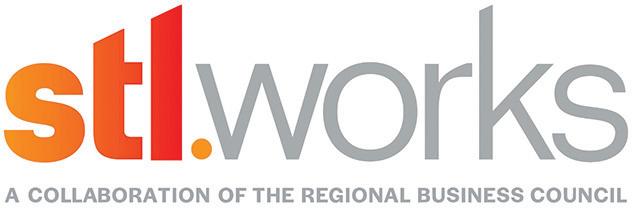
Kevon began working for McCarthy on April 13, 2015. He says he remembers the date specifically because it changed his life. Within 13 months he went from being a yard worker to an apprentice laborer and 18 months after that to journeyman.
Along the way, he discovered a career that gave him a sense of purpose, helped him
Continued from A9
of positive cases. People in the region should
ment program created in partnership with St. Louis Civic Pride Foundation to connect job seekers with positions that don’t require college degrees, but some level of training.
“STL.Works embraces the idea that there are pathways and resources to well-paying jobs in construction, as well as technology, healthcare and manufacturing, that can give people like Kevon a way to gain the skills they need, get the job they want and the future they deserve,” said
remain vigilant and keep following health guidelines as new variants of the virus continue to spread aggressively, said Dr. Faisal Khan, St. Louis County public health

St. Louis Circuit Judge Michael Stelzer has extended his order halting evictions through April 5 to limit the spread of the coronavirus that causes COVID-19.
“Working in construction and specifically for McCarthy has given me the opportunity to work for a great company that cares about me, my safety and my future,” said Kevon. “When I am on a job, I know someone always has ‘my back’ when it comes to safety because we are taught from day one to watch out for each other constantly, every day and all the time. And McCarthy also works with me so that I have the time I need to take time off from work to attend classes I need to keep advancing.” Kevon has worked on a number of projects for McCarthy, including the renovation of Macelwane Hall and other projects for St. Louis University, the St. Louis Aquarium at Union Station, and currently for Next NGA West.
In describing a typical day, he says every day is different just like the weather.
“Somedays are so busy I grab a fast lunch and work overtime; other days are pretty routine with concrete pours and working with rebar. The variety keeps it interesting,” he added.
director. “We’re not out of the woods yet,” Khan said. “We want to give as much of a leeway and concession as possible, but we have to remain cautious and watchful about what the virus can do next. The last thing we want to see is another surge in cases.”
The changes follow an announcement by Missouri Gov. Mike Parson that more vaccination events will be held in the St. Louis area starting this week.
Khan said the county will continue to examine COVID19 case data over the coming weeks and months to determine how guidelines will change in the future.
“We are still in the midst of the pandemic,” Khan said. “Even as the vaccine is being rolled out and more and more people are being vaccinated every day, we are a long way away from being able to say, yes, now it’s OK for everybody to do as they please and gather indoors and outdoors in any number.”
By Danielle Brown
the St. Louis American
Of
Work in the criminal justice system oftentimes takes a toll on everyone involved in cases because the outcomes don’t always result in the anticipated conclusions.
Levi the Support Dog, an undeniably cute beige Labrador Retriever helps with relieving the stress of everyone inside the St. Louis County Justice Center at the St. Louis County Prosecutor’s Office.
“Of course, Levi is adorable, and you could say he functions as a mascot for the office,” St. Louis Prosecuting Attorney Wesley Bell said. “Victim and witness testimonies are essential in prosecuting a case, he helps comfort them and empower them to testify. He helps bring justice for victims, especially our youngest and most vulnerable ones.”
He was donated almost three years ago by Duo Dogs, a nonprofit organization dedicated to training dogs and connecting them to businesses and people at no cost. The prosecutor’s office is only responsible for Levi’s food and veterinary bills.
“Duo has found dogs can be a calming force, especially when it comes to children,” said Susanne Wandling, Duo Dogs’ director of canine services. “The dogs help keep the child calm, grounded and help keep stories of what happened to the child confidential.”
Lisa Jones, director of Victim Services in the prosecuting office and Levi’s handler said that a vast majority of the victims are African American. According to Jones, the kids are usually nervous because they’re having to reveal accounts stemming from sexual and domestic abuse.
“In the past, it was always easy to sit on the floor and color with them or talk about sports, but Levi breaks barriers just by walking in the room,” Jones said. “When the kids come in, they typically enter while we’re talking about the incident. They tend to pet him and not even realize they’re answering questions that would otherwise cause them a great deal of anxiety.
Jones has firsthand seen the impact Levi has on the kids when he sits in with them on depositions, their sworn-in testimony part of a pre-trial. One case where he was especially helpful was last year when a





young lady was afraid to walk in the courtroom. She eventually overcame that fear with the help of Levi.
“She looked at me and said, ‘I don’t think I can do this, I can’t go in,’ I told her you know what you don’t have to, we can take as long as you need,” Jones said. “Once I consoled her and let her know that Levi was probably nervous too, she held his ear and told Levi we can do this. Then they walked in and she testified beautifully. She held onto his leash and reached down to pet him whenever she got nervous.”
Initially, Jones said defense attorneys thought the dog would make the victims sympathetic and serve as an influence on the jury in reaching a verdict. But in the end, it did the opposite and it didn’t make a direct impact on the decision-making process.
“In one case the suspect was
found not guilty, but Levi’s presence didn’t unduly influence the jury,” Jones said. “They still evaluated the evidence based on what was given and not because a cute dog was sitting at this child’s feet.”
One thing Jones always tries to remember is how difficult it is for people to come in and tell their story in front of complete strangers. She always reminds herself and prosecutors that a victim’s reluctance to be part of the system has nothing to do with them or the system.
“We’re talking about innerfamily crimes that are difficult and painful,” Jones said. “As much as we can prep people there’s no way we can take that trauma away from them and I think that’s the hard part. All we can do is teach them coping skills and I think Levi is one of those coping skills.”
Learn more about Duo Dogs at https://duodogs.org/.





By Sandra Jordan
Of The St. Louis American
More than 2,000 teachers and other educators in the city of St. Louis are getting COVID vaccinations this week through a coordinated effort between St. Louis Public Schools, the Army National Guard and the Urban League of Metropolitan St. Louis.
The four-day mass vaccination event at Vashon High School began Monday, March 15 by appointment and takes place every day this week except for Wednesday, from 9 a.m. to 5 p.m. The teachers are getting the single dose Janssen COVID vaccine by Johnson & Johnson. Walmart also has provided additional vaccine support for SLPS staff.
n The state opened up the vaccine schedule on March 15 to allow teachers, food workers and those in utilities, technology and energy to receive the vaccine, although thousands from higher tiers are still waiting for their vaccine.
SLPS Superintendent Dr. Kelvin Adams, said the District has also extended an invitation to area educators from charter, private and parochial schools.
By Sylvester Brown, Jr.
Of the St. Louis American
“Gaining access to the COVID-19 vaccine has been a top priority for our District,” Adams said. “Now, through our partnerships with the Urban League and the Army National Guard, we are pleased to be able to offer this measure of protection for our staff and the greater community of educators in the interest of increasing the safety of all staff and students.”
The state opened up the vaccine schedule on March 15 to allow teachers, food workers and those in utilities, technology and energy to receive the vaccine, although thousands from higher tiers are still waiting for their vaccine. Worse yet, some people
By Sharonica Hardin-Bartley
As a superintendent of a school district in which more than four-fifths of its students are Black, COVID-19 has been nothing but a scourge to our community and the work we’ve done to lift and empower our students.
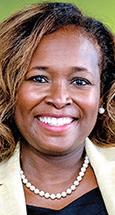
This virus has been particularly cruel to the Black community. It has cut off many of our students from the refuge of school buildings where they not only learn best, but where we hope they have powerful relationships with their teachers, coaches and staff and critical wellness resources that they may not have at home. This virus has also unfairly separated our fine and loving Black culture of extended family members. Our divine bloodlines and our blessed cultural web of aunties and uncles and cousins and grandchildren who support one another currently cannot give rides to one another, share meals or gather on Sundays. They cannot celebrate milestones like births and birthdays, graduations or even a great report card - all the things that fly in the face of poverty and systemic exclusion. Right now, they cannot hug. For some struggling to survive, their safety bubble is impossible to keep. Their need for extended family support may open a doorway to this awful disease. When will it stop? Right now we have a complex and emotional choice to make. Do we take the vaccine or not? Do we trust a medical profession that treated our ancestors like guinea pigs, cruelly oblivious to their pain? Do we trust an institution that to this day treats Black men and women different in ERs, ambulances, exam rooms and labor and delivery wards?
I can’t make this critical medical decision for you. Like all of this, it’s incredibly personal and part of the pain, resilience and courageous beauty of the Black experience. However, I’ve been asked quite a bit about what to do in my role as a school superintendent where most white parents and grandparents will without hesitation get the vaccine, and many of our black families may not.
Thomas Brown has overcome tougher obstacles in his life
After five grueling months, Thomas Brown, 61, has finally gone back to work. His job as a housekeeper with Drury’s Pear Tree Inn St. Louis Near Union Station, temporarily ended as the COVID-19 pandemic shuttered thousands of businesses. According to a study released by the American Hotel & Lodging Association (AHLA), nearly nine in 10 hotels nationwide had been forced to lay off or furlough employees due to the deadly disease. For Brown, the loss was devastating. Getting hired at the Pear Tree in 2019 was a life raft. It signaled the end of a two-year bout with unemployment, a chance to get caught up on mounting child support payments and the ability to keep a roof over his head. Just as things were looking up, the mysterious, vast-spreading disease reversed Brown’s
n Getting hired at the Pear Tree in 2019 was a life raft.
It signaled the end of a twoyear bout with unemployment, a chance to get caught up on mounting child support payments and the ability to keep a roof over his head.
In a way, this has been the trajectory of Brown’s up-then-down life. The word “special” was attached to him throughout his young life and it wasn’t a compliment. Family can be cruel, and Brown’s 10 siblings took harsh delight in poking fun at his crossed eyes and thick glasses. He admits that he

After five grueling months, Thomas Brown, 61, has finally gone back to work. His job as a housekeeper with Drury’s Peachtree Hotel Downtown, temporarily ended as the COVID-19 pandemic shuttered thousands of businesses.


Continued from A12
had trouble reading and writing in elementary school and was crushed when his mother agreed that he should be sent to Martin Luther King Jr. High School for disabled children in the city.
“I was angry that momma put me in that school. I wasn’t disabled,” Brown recalled bitterly. “I couldn’t understand why I was there with those people?”
Brown now admits that attending the school was a “privilege.”
“I watched handicapped people trying to learn and trying to succeed with what they had. I wasn’t blind, deaf or in a wheelchair. They helped me realize that I shouldn’t be ashamed of my shortcomings, that I was really blessed and could do anything.”
His father was a chronic alcoholic, but Brown said his mother, Evalena, was his hero.
“We were poor, but momma made sure her 11 kids were always happy and taken care of. We were always laughing, joking, singing, and dancing around the house.”
Brown was raised in the Jehovah’s Witness religion. At a young age he was knocking on the doors of strangers, spreading the gospel. This, he said, gave him an advantage.
“I was raised to talk to people and make them happy, hopeful. The religion helped me relate to different people; to not be bothered by racism; to be the best me I could be.”
Brown said college was never an option. Getting a job, any job after he graduated from high school was his only obsession. He worked at restaurants and temporary gigs until 1987 when he landed a job in food prep at Children’s Hospital. Things worked well there for almost 10 years, Brown said, until he filed a disability claim for an on-the-job injury. After that, his relationship with his bosses soured and he was “let go” in 2008.
Corrective glasses fixed his eye problem. MLK High school helped boost his self-esteem. Brown said he developed a strong work ethic and an infectious sense of humor. He said he’s that employee who keeps his co-workers in stitches with jokes and impromptu impressions of celebrities like William Shatner or Elvis Presley. Before he lost the hospital job, however, he caught the eye of Mr. Eugene Henry, an entrepreneur with his own cleaning company. Henry, who was vis-

iting his grandson at the hospital, took Brown under his wing. He worked after hours with Henry cleaning offices and eventually went on to become a fulltime employee. “Mr. Henry treated me like a son,” Brown recollected. “He taught me the art of cleaning, which gave me a sense of responsibility and pride. He kept saying I could have my own cleaning business someday.” Brown got married in 1990. He and his wife, Tonya, had two children. After the birth of their daughter, Tonya’s started having heart problems. Her speech was slurring, she started
losing her sight and balance and was eventually wheelchair bound. Tonya was diagnosed with multiple sclerosis and died from related complications in 2006.
The next 13 years were a series of major setbacks for Brown. Opportunities with Mr. Henry dried up. He and his two kids bounced from placeto-place for two years as he struggled to find steady work. Eventually, he was forced to let the children stay with his wife’s family who petitioned the courts for custody and won. Without money for legal representation, Brown feels he is the victim of a biased judicial sys-
tem. He’s sought help from social advocacy agencies but has yet to receive custody or visitation rights. The majority of his paychecks and unemployment benefits, he added, is being garnished by the courts. Brown has been relying on his entrepreneurial skills to get by. With his rusty but dependable 1990 Chevy pickup, a buffer, carpet cleaner and a lawn mower he’s managed to survive while furloughed from the hotel. Just when he felt he was on the road to recovery and perhaps even getting custody of his kids (Brown also has
two children from another relationship), the coronavirus reinforced the fragility of his life.
In February, he returned to the Pear Tree with a new cleaning regime. Drury, a Missouri company with more than 150 properties has partnered with Ecolab Inc. – a global leader in hygiene and infection prevention solutions for the hospitality industry.
The new protocol requires Brown to follow a detailed checklist to ensure that all frequently touched areas— including handles, luggage carts, elevator buttons and more—are disinfected fre-
Thomas Brown returns to work with added responsibilities to keep the Drury Inn clean and sanitized.
quently throughout the day. Brown is just happy to see guests returning to the hotel. Unlike cleaning empty office spaces in the late-night hours, he says nothing makes him happier than satisfying guests and having them compliment his work or service.
“My hours aren’t what they used to be but, hopefully that’ll change as this virus gets under control,” Brown explained.
“But I’m back at work, back to cleaning, back to the real Tommy. For me, that means I have a fighting chance.” Sylvester Brown Jr. is The St. Louis American’s inaugural Deaconess Fellow.
Continued from A12
My advice is this: Look to our youth. Look to the vision and innovation of your children and grandchildren and great children.
One of them, at the sweet age of 24 in full bloom like a spring daffodil, had the courage to stand on a podium as a Bartley
Continued from A12
are getting excited about being notified that they are eligible, only to find out they have to drive hours to receive it.
Demoris Buford received such a notice from the Missouri COVID-19 Vaccine Navigator (MOStopsCovid.com) this week. “I live in the STL region. The places I can go get my shot over the weekend is in…West Plains MO, St. Joseph MO, Springfield MO.,” Buford posted on social media. “This is jacked up especially since there is a mass vaccination event literally two miles from my home this Saturday...RIDICULOUS!”
young Black woman at one of the tensest presidential inaugurations ever and joyfully tell all Americans, it’s the past we step into and how we repair it. Let’s also look to Dr. Kizzmekia “Kizzy” Corbett, an African American researcher who led the charge to develop the first COVID-19 vaccine at Pfizer. This is a woman who embraced intellect and science amid cruel political pressure to disbelieve everything she stood
In St. Louis County at the Florissant Valley campus of St. Louis Community College, the St. Louis County Dept. of Public Health will begin vaccinating school personnel on March 23 and March 24. “We all want students and educators safely back in their classrooms, County Executive Dr. Sam Page said in the announcement. “In-person learning is the ideal setting and our children need to be in a place where they can socialize, develop interpersonal skills and share life experiences with their friends.”
As many as 2,000 school employees could receive vaccinations on those two days, with the support of the Missouri National Guard. Several thou-
for. Let’s look closer to home to Brittany Packnett and the young voices of Ferguson. Remember African Americans like Bethany Johnson-Javois, who put health equity on the table, and Jason Purnell who framed the issue with powerful research and action among the white power structures in this city. Let’s follow the wisdom of Serena Muhammad who took the reins of the COVID-
sand employees of schools throughout St. Louis County – public, private and parochial – have pre-registered, and next week’s event will be the first in a series of vaccination opportunities the Health Department plans to conduct for school personnel in the coming weeks.
Last week, working with the Mehlville Fire District and the Office of Emergency Management, the County health dept. began delivering vaccines to homebound residents and their caregivers. Fire districts throughout the county are to be involved in that rollout. Find out more at stlcorona. com. To see if you qualify, call 314-615-2660 or email dphcovidvaccine@stlouisco.com. Last week, the Centers
19 Regional Task Force in August and hasn’t looked back. Think of the maternal health torchbearers like Brittany “Tru” Kellman who literally built a village of joy and health for expectant Black mothers right in the center of Ferguson. Or the homegrown Rev. Starsky Wilson, who is now the leader of one of the most powerful children’s organizations in America. I know I’ve missed so many many others
for Disease Control and Prevention issued its first set of guidelines on how people who are fully vaccinated against COVID-19 can interact safely with others. A person is considered fully vaccinated two weeks after receiving the last required dose of vaccine. The CDC says persons who are fully vaccinated can: visit other fully vaccinated people indoors without wearing masks or staying six feet apart; visit unvaccinated people from one other household indoors without wearing masks or staying six feet apart if everyone in the other household is at low risk for severe disease. Fully vaccinated people do not have to quarantine and take a COVID test if they
who deserve applause, as well as those in the generations behind them. And I apologize for that.
But my point is, change in medicine has sprung from the power, vision and integrity of our Black offspring. It is this youthful hope and transformative change they are building together that still gives me hope for our students currently fighting to be educated and healthy in a global pandemic.
are asymptomatic after being exposed to someone who has COVID-19. Find out more at CDC.gov.
The World Health Organization declared COVID19 a global pandemic on March 11, 2020 and the toll is heartbreaking. On March 16 this year, the number of global coronavirus cases from the Johns Hopkins University COVID-19 passed 120,530,037 and 2,665,925 deaths. In the United States, 29542,308 cases and 536,639 deaths. In Missouri, 572,074 cases and 8,694 deaths; in St. Louis, 90,641 cases and 2,062 deaths.
CDC Director Dr. Rochelle P. Walensky, marked the oneyear pandemic milestone. “In one year, we have lost over
It is in honor of all of our youth - the young innovators and the children - that I will let go of my fear. I will step into the past to repair my trust in medicine lost in our African American experience. I will be getting the vaccine.
Dr. Sharonica HardinBartley is the superintendent of the School District of University City.
520,000 Americans to COVID19. These are grandparents, parents, and children. They are siblings, friends, and neighbors,” Walensky said. “While we accumulate more evidence to support the safe return to everyday activities, please continue taking precautions in public and when around people who are at high risk for severe COVID-19 disease. Whether you are already vaccinated or not yet vaccinated, wear a well-fitted mask, practice physical distancing, wash your hands often, avoid medium and large gatherings, and avoid travel. We know these measures work to prevent the spread of this virus and help protect each other.”









When we’re lucky enough to have a chance to go out for dinner, there are a few ways to stay healthy with our food


those leftovers for lunch the next day!
are popcorn, wheatberries, brown rice and wild rice.
INGREDIENTS:










We each need at least 3 servings per day of whole grains. But what does that mean? How can we know what foods contain whole grains?
See if the restaurant will let you “share” a meal. Many meals are two, three or more times an actual serving size.
In our “Super-Size” world, we can easily lose track of what an actual serving size means. When reading labels on a food or drink product, you can determine the nutrients, sodium, fiber, sugar and calories of a serving size. But be careful; just because it looks like one small bottle
Look at the ingredients list of a package of food you are about to eat. If the word “whole” is used, then there is most likely a whole grain ingredient. A few items that don’t use the word whole
As soon as you’ve divided your plate into the right size servings, ask your server for a to-go box. Go ahead and box up what you don’t need to eat right away. You can enjoy
> Ask the server how the different menu items are prepared. Fried, sautéed, and
Getting plenty of whole grains in your diet can improve your health and reduce your chance for some chronic illnesses such as stroke, diabetes, heart disease and high blood pressure. Visit wholegrainscouncil.com for more information.
even simmered can all mean, “cooked in oil.” Instead, choose baked or grilled options.
As spring approaches, warmer weather allows us all to get more outdoor exercise. Here are some ways to become a more active person.
> Avoid gravies, cheese sauces and other kinds of toppings that often just add fat and calories.
of soda — it may not be considered one serving size. For example, a 20-oz bottle contains 2.5 servings. So if the bottle states “110 calories per serving,” that means the entire bottle contains a total of 275 calories! Remember to watch those serving sizes and you’ll have better control over what you’re eating and drinking.
Melissa Douglass, MSW
> Stick with water to drink. Not only will you save money, but you won’t be adding in extra calories from a sugarfilled drink.
Learning Standards: HPE 2, HPE 5, NH 1, NH 3, NH 5
> What are other ways to stay healthy while dining out?
Latoya Woods, DNP, APRN, FNP-C
Deborah Edwards, School Nurse
Learning Standards: HPE 2, HPE 4, HPE 5, NH 1, NH 2,
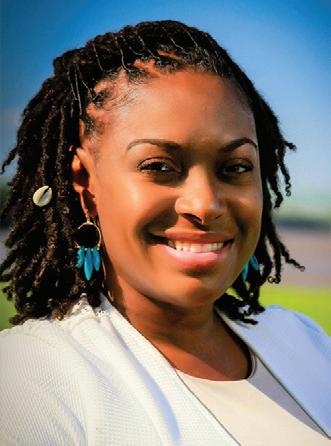

Where do you work? I am a family nurse practitioner for BJC Medical Group.
Where do you work? I am the founder and distance counselor for Goal Driven Counseling, LLC.
Where do you work? I am a school nurse at Monroe Elementary School.
Learning Standards: HPE 1, HPE 2, HPE 5, NH 1, NH 5
Instead of watching TV — ride your bike with friends.
March 20, 2021, is the first day of spring. With spring comes warmer weather and longer days (later sunset). Make it a habit to spend as much time playing outside as the weather allows.
Secondly, when you are finished with any kind of strenuous (very active) exercise, take some time to cool down. You can slowly stretch your arms and
and breathing. You want to have fun, but it’s also a great way to help keep your heart, lungs and body healthy.
Instead of playing video games — play baseball, football, badminton, or some other active game.
It’s important that before you embark on any kind of exercise to remember two things: warm up and cool down. Start with some slow stretches and movement (like walking) to increase your heart rate a little. Warm up for a good five minutes before increasing your heart rate.
Some fun outdoor games to play include tag, kickball, basketball, Frisbee, and bicycling. Choose activities that increase your heart rate
Instead of surfing the ‘Net — go for a brisk walk around the neighborhood.
> NEVER walk on a “frozen” pond, lake, river or any other body of water. Just because it looks frozen does not mean it is safe.
Break into small groups and define what it means to be a bully. Share your ideas with the class. Did you have the same things listed (as the other groups) that you would consider as bullying behavior?
Now back in your groups, create a newspaper ad that includes at least two of the following:
Make a list of your favorite 10 activities to do outdoors. Compare your list with your classmates and create a chart to see what are the most popular.
Can you think of other ways to be more active? Going outside and staying active not only increases your heart rate and burns calories, but it also helps you build friendships!
legs again, and continue with reduced speed movements until your heart rate begins to slow down. This warm-up and recovery period is important for your heart health. It also helps to reduce the amount of muscle pulls and strains.
Learning Standards:
HPE1, HPE 2, HPE 5, NH 1, NH 5
Learning Standards: HPE 1, HPE 2, HPE 5, NH 1
> What to do if you see someone else bullied.
Learning Standards: HPE 2, HPE 5, NH 1
Where did you go to school? I graduated from McCluer High School. I then earned a Bachelor of Nursing and a Master of Nursing Practice from the University of Missouri – St. Louis. And finally, I earned a Doctorate of Nursing Practice from Maryville University.
Where did you go to school? I graduated from Whitney Young Magnet High School in Chicago, IL: same as former first lady Mrs. Michelle Obama. I then earned a Bachelor of Science in Social Work, and a Master of Social Work from the University of Missouri – St. Louis. I also completed two more years of supervision and exams to become a Licensed Clinical Social Worker in the state of Missouri.
What does a Licensed Clinical Social Worker do?
Where did you go to school? I graduated from Sumner High School. I then earned Associate Degree in Nursing from Forest Park College and a BS in Business Administration from Columbia College.
What does a school nurse do? I assess the concerns of students who are ill, injured or experiencing alterations in their normal health. Nurses screen daily staff, students and visitors for safety. Monroe School is a pilot school for Covid-19 test sites in partnership with the city.
What does a family nurse practitioner do? Each day I have office visits with patients to help treat new health conditions and/or manage established health conditions. I perform physical examinations on patients, order labs, read x-rays results, and more.
I use technology to help teens and young adults explore their emotions, better understand their feelings, work through relationships, and address common challenges completely online through a computer, tablet, or smart phone. Similar to a Facetime call, I support and guide my clients from the comfort of their home or private location where they are comfortable
A BMI (Body Mass Index) is a generic way to calculate where your weight falls into categories (thin, average, overweight, obese). However, it’s a good idea to remember that a BMI may not take into consideration many things such as athleticism (how athletic you are), your bone density and other factors. Discuss your BMI with your
> If you are with someone that falls through the ice, first run (or call) for help. Do not try to go out onto the ice to help your friend. You can fall through the ice too.
> How bullying hurts others.
> What to do if you are bullied.
> When walking on icecovered roadways or sidewalks, take baby steps. Walk carefully and slowly.
doctor if you have any questions. The formula to calculate your BMI is 703 X weight (lbs) ÷ height (in inches/squared) or search “BMI Calculator” to find an easy fill-in chart online. If your number is high, what are some ways to lower your BMI?
> What to do if YOU are the bully.
Look through the newspaper for examples of ad layouts and design. Discuss the words “compassion,” “empathy” and “sympathy.” How do they each play into your response to bullying at your school?
> Also — remember to look up! Icicles injure numerous people every year. If you see large icicles forming over your front steps, ask your parents to use a broom handle to knock them off to the side before they break loose from your gutters.
> What other ice hazards are there?
Learning Standards: HPE 1, HPE 2, NH 5
Learning Standards: HPE 2, HPE 5, NH 4
Learning Standards: HPE 2, HPE 5, HPE 7, NH 5, NH 7
“Questions or comments? Contact Cathy Sewell csewell@stlamerican.com or 314-289-5422
Ingredients:
Banana PB
Smoothie
Ingredients: 1 15-Oz Can Garbanzo beans 1 Garlic clove, crushed
Ingredients: 1/2 Cp Vanilla Greek yogurt, 3 Tbsp Natural peanut butter, 1 Ripe banana (sliced and frozen), Splash of vanilla (optional) 6 Ice cubes
2 Tsp Cumin, 1 Tsp Olive oil, ½ Tsp Salt Directions: Combine all ingredients in a blender until smooth. Enjoy with baked tortilla chips or raw vegetables.
Directions: Blend all ingredients until Smooth. Makes 2 yummy smoothies!
Directions: Spread peanut butter on four of the crackers and top with sliced strawberries. Drizzle with honey and top with the other crackers to make four cracker-wiches.
Why did you choose this career? I chose this career to help improve the health of my community.
Why did you choose this career? I love nursing because there are many opportunities in hospitals, schools, clinics and offices, insurance, legal and research. My passion is working in the schools with students, parents, staff and community partners.
Why did you choose this career? I chose this career because I enjoy being a support to teens and young adults in a very challenging phase of life that can be overwhelming. I enjoy teaching them how to best take care of themselves so they can live healthy and fulfilling lives.
What is your favorite part of the job you have? Many chronic health conditions (diabetes, high cholesterol, high blood pressure) are preventable, and early detection is key. Thus my favorite part of the job is partnering with patients to establish and manage a plan to help them each live a long and healthy life.
What is your favorite part of the job you have? I enjoy when a child tells you, “I want to be a nurse.” And best of all, I love the smiles, hugs and “thank-yous”.
Learning Standards: HPE6, NH3
What is your favorite part of the job you have? I love that my job makes talking about mental health not as scary and even makes it kind of cool. I love that I get to build valuable relationships with so many people that trust me to be there for them. I love that no matter where my clients are, we can simply connect with a video call and I can not only support them through hard times, but lots of good times as well.
Learning Standards: HPE6, NH3
Learning Standards: HPE6, NH3
“Questions or comments? Contact Cathy Sewell csewell@stlamerican.com or 314-289-5422
“Questions or comments? Contact Cathy Sewell csewell@stlamerican.com or 314-289-5422






The St. Louis American’s award winning NIE program provides newspapers and resources to more than 8,000 teachers and students each week throughout the school year, at no charge.

Students use independent research to study animals and their habitats and then create one of their own based on their research.


Have you ever dreamed of designing a car? Do you wonder how these ideas become a reality? Car designers start with research. They study the current trends and interests. The car has to appeal to the buyers. Next, they sketch a design of the car (computers are often used for this stage). After the design is perfected, a prototype is built. A prototype is a sample, or model, of the car. The next stage is testing. Cars must undergo many tests to see how they will handle crashes, extreme temperatures, wind variations, and various road conditions. Once the car has passed the tests, then it will be built.
In factories, a steel sheet is cut according to the size of the part and then is bent and cut in a stamping machine to make parts such as car doors, roofs, and hoods. Welders use electricity to melt these stamps at certain points to join them together to form the car.

One car has approximately 30,000 parts counting every part down to the small screws. After the car is formed, it will be painted. Cars can be made customized to the customer’s order.
To create your own car online, visit: http://www.abcya.com/create_ and_build_car.htm.
Learning Standards: I can read nonfiction text for main idea and supporting details.

Background Information:
In this open-ended experiment, you will design a car. Get ready for some critical thinking!
Materials Needed:
• 3 Straws • 4 Lifesavers • 1 Piece of Paper
• 2 Paper Clips • 50 Centimeters of Tape Process:
q Use the materials given to design a car. This car will be used for a race. Here’s the catch! You can only move the cars by blowing on them!

Answer these questions about cars.
z A local car show sold 12,000 tickets its first year and 14,000 tickets its second year. On the third year, it sold 50% more than first two years combined. How many tickets were sold in the third year? ______
Analyze: What did you notice about the most effective designs? What surprised you? What would you do differently next time?
Learning Standards: I can complete an experiment and create a model. I can analyze results.

Earl Lucas
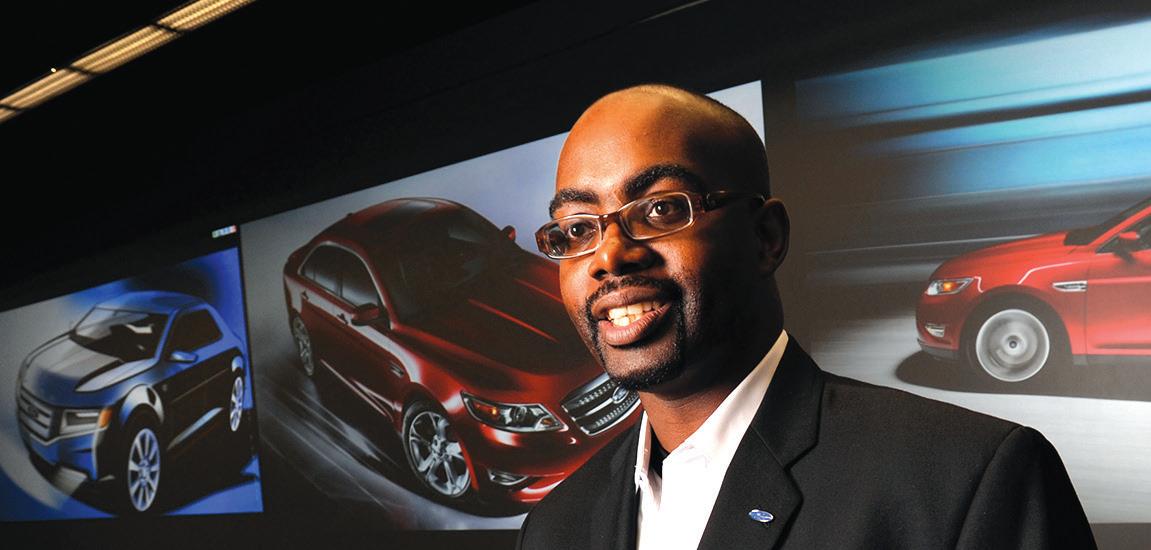
Earl
from The College for Creative Studies. Musicians Norah Jones and Erykah Badu attended this school.
Lucas went to the College for Creative Studies in Detroit, Michigan, to study 3D jewelry design. He later switched to Industrial Design because of his interest in transportation. While in college, he worked with friends to help design a van to transport elderly citizens. After college, Lucas worked designing car seats, panels for doors, and headliners for an auto supply company. In Texas, he was given the amazing opportunity to design extravagant planes with gold, platinum, and jewels for the Sultan of Brunei.
In 1999, Lucas was hired to design cars for Ford. He designs the exterior of the car. Of his 10-20 designs, he will narrow it down to one that works. He was part of the design team that developed the 2010 Ford Taurus SHO, 2003 Lincoln Navigator and Expedition. His favorite part about the job? Lucas replies, “You get paid for sketching!” According to Black Enterprise magazine, Lucas is one of 25 to 30 AfricanAmerican car designers in the world.
“Whether I’m designing cars for the average person or planes for the world’s richest man, it’s those lessons I learned at College for Creative Studies that helped me become the designer I am today,” said Lucas. “I was used to working in an atmosphere where pressure and competition were the norm. Because I was not treated as a star student, I yearned for better design solutions and attention. This forced me to work harder.”
To read more about Earl Lucas and his designs, visit: http://www.ebony.com/life/the-brother-who-revivedthe-ford-taurus-earl-lucas#axzz3m32AUwm2.
Learning Standards: about a person who has made a contribution in the fields of science, technology, engineering and math.
DID YOU KNOW?

x
c Angela’s parents buy a used car for $3,500. They agree to sell it to her if she can pay it off in 16 months. How much will Angela need to pay per month?
v Andrew rented a car. The charge was $49/day plus $.10/ mile driven. If he had the car for two days and drove a total of 180 miles, how much did he spend?
b Ben’s car gets 28 miles per gallon. If he has to drive 350 miles, how many gallons of gas will he use? If gas costs $2.49/gallon, how much will he spend for the gas?
Learning Standards: I can add, subtract, multiply, and divide to solve a problem. I can use a formula to solve a word problem.



Enjoy these activities that help you get to know your St. Louis American newspaper.
Activity One — Margin of Victory: the sports section of the newspaper to compare numbers. Locate the final scores of two different games. Use pictures, objects, or symbols to calculate the distances covered.


Activity Two — Newspaper Road Map: With a friend, choose a news story to be your make believe road map. Both of you cut the story from two separate newspapers. Your starting point will be the first word. Your partner directions (ex: 2 words east, 4 lines south, 1 word west, etc.), while they also navigate the route. When they say “stop,” compare your maps. Choose another article so you can give your partner directions.
Learning Standards: I can use the newspaper to locate information. I can compare numbers. I can follow directions.


Artist Jordan Weber’s work draws on the social and environmental justice movements. His 2014 piece with artist Ron Finley, American Dreamers Phase 2,
features a deconstructed police car with a community garden growing from it inspired by the Ferguson
By Chad Davis
St. Louis Public Radio
Artist Jordan Weber’s work draws on the social and environmental justice movements. His 2014 piece with artist Ron Finley, American Dreamers Phase 2, (above) features a deconstructed police car with a community garden growing from it inspired by the Ferguson Uprising. Weber’s latest project is inspired by the Close the Workhouse campaign.
The new artist-in-residence at the Pulitzer Arts Foundation and Washington University will focus on environmentalism and racial justice.

Des Moines-based visual artist Jordan Weber creates art that uses sculptures, green spaces and installations. Weber’s work in St. Louis will focus on the Close the Workhouse campaign.
campaign.
St. Louis Public Radio’s Chad Davis spoke with Weber to discuss his St. Louis residency, his career beginnings and how he transitioned his work from pop art and surrealism years ago to art he hopes will spark social change.
Chad Davis: What made you want to shift to political art that incorporates social commentary?
Jordan Weber: I was doing very environmentally focused work when I was doing larger paintings, but the turning point was Ferguson. It was Trayvon Martin and Michael Brown. It was going down to Ferguson, not the first weekend of the protest, but the second weekend of the protests. Seeing people at their wit’s end at that first Friday and then going into Saturday in Ferguson completely flipped every particle in my body into really knowing
By Danielle Brown Of The St. Louis American
Some people are natural-born leaders and influencers, Precious Smith, 34, fits that category. Empowering and encouraging others has always been second-nature for the licensed life coach, who confidently calls herself an “INNERstrength coach” instead.
“I’m all about working on yourself from the inside out, because I want people to live a life of fulfillment, where people can recognize both their internal and external struggles,” Smith said. “The name INNERstrength coach came one day just from me noticing that I energize people and help them to tap deep down into themselves in figuring out who they are.”
Smith, a 2005 graduate of Ritenour High School, holds a bachelor’s degree in social work from Southeast Missouri State University. In 2018, she received training and two master certifications from the National Partnership for Community Leadership, a global organization dedicated to ending child poverty. In Oct. 2020, she completed a Life Purpose Life Coach training through Transformation Academy, an online education program that offers life coach certification. Prior to life coaching, Smith served in a variety of capacities including work in human resources and social services. The worldwide coronavirus pandemic caused Smith to restructure her coaching into a virtual format rather than meeting in person. The adjustment hasn’t been as challenging as one might think. Now, she and her clients communicate by telephone, video, Facebook Messenger, FaceTime,

As an ‘INNERstrength’ coach, Precious Smith pushes clients to get to the root of their problems.
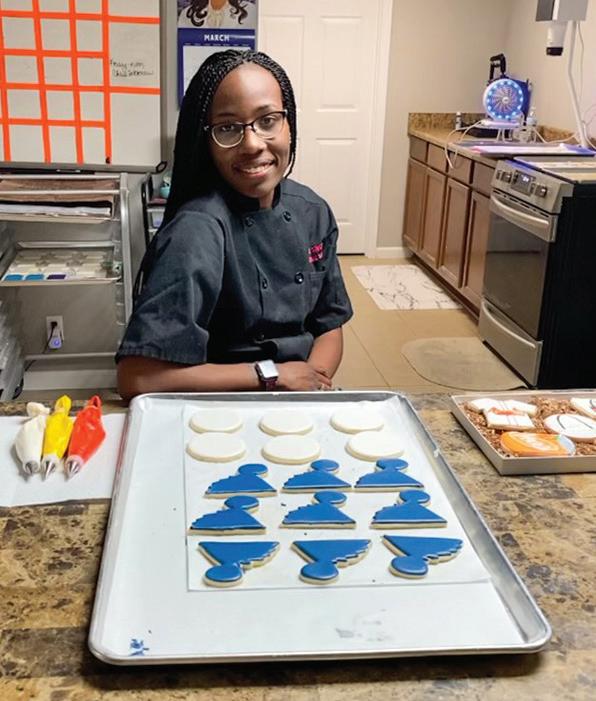
Danielle Brown Of The St. Louis American
The coronavirus pandemic has disproportionately ravished Black and Brown communities around the country and St. Louis is no exception.
It was a year ago last week that the first COVID-19 case was detected in St. Louis and since then our normal has changed to what we’re now calling the “new normal.”
Throughout the year parents and students have had to adjust to school closings, openings and reclosings, as well as hybrids of at-home and atschool classes.
Most businesses, with the exception of those in frontline industries, have gone all virtual. Many companies have still not specified when their employees will be asked to return.
Restaurants, bars and other social gathering venues have been impacted severely - many having shut their doors permanently.
Prime 55, a “fine dining” restaurant in the Delmar Loop is one of many businesses that has had to adjust. At one point, Orlando Watson, co-owner with his friend and business partner Tony Davis, said it was a challenge having to close.
n Restaurants, bars and other social gathering venues have been impacted severely -- many having shut their doors permanently.
or Zoom.
With coaching, she often acts as a provocateur, forcing clients into a place where they must address their adversities.
“We work through what the root of the problem is and figure out what’s triggering them to act in a certain way, whether it’s them being dysfunctional at work, in a relationship, or difficulty in keeping their finances in order,” Smith said.
East St. Louis native Tasha Kelly has used Smith’s services since January. So far, Kelly said Smith has been helpful, especially during these trying times.
“She’s helped me not focus on the external things and understand that the pandemic doesn’t stop life from happening,” Kelly said.
Although Smith works with others to overcome hurdles, she has also
“We had to shut down for a bit like everybody else did and resort to curbside pickup, which didn’t really gel well with our business and menu,” Watson said. “We didn’t make much money those two months we were shut down.” Amber Tomlin, owner of the baking company, Bebe’s Bake Shoppe faced uncertainty at the beginning of the pandemic when customers cancelled their orders in response to the citywide lockdown. To survive she had to adjust to the new way people were celebrating. Soon, her orders increased with the popularity of birthday parades and virtual parties.
“The pandemic actually helped my business in the aspect that people really started to get creative and do a lot of personal individualized treats,” Tomlin said.
When restaurants were allowed to reopen at 25% capacity, Prime 55 actually became more successful, but it had to reduce it’s staff by nearly half. It operates now with 14 employees. But they also had to make other adjustments, like spacing tables to adhere to CDC social distancing guidelines, sanitize all areas much more frequently, and staff have to wear masks at all times. When the pandemic first hit, most schools closed and transitioned to virtual learning. Alexis Shelton has a 10 year old daughter and


By Ruthie Neisen, Missouri Historical Society
had around 6,000 residents but no hospital. Four members of the Sisters of Charity changed that by founding the first hospital west of the Mississippi and the first Catholic hospital in the US. The sisters helped St. Louisans survive many tragic events, including fire and two cholera epidemics, risking their own lives in the process. During the cholera outbreak of 1849, the sisters, who by this time were experienced health-care providers, helped set up a hospital on Quarantine Island in the Mississippi River and did most of the on-the-ground work of caring for the sick. Their expertise and selflessness made St. Louis one of the few cities in the nation prepared to hospitalize cholera patients.
Anna Maria Bohm is one of 21 women listed as midwives in the 1857 St. Louis City Directory Most married women of this time would have been listed under their husband’s name in the directory. Bohm’s independent listing and occupation speak to the important role midwives played in women’s health care and childbirth in the St. Louis community at a time when midwifery itself faced increased hostility from formally trained male surgeons. Despite the professionalism of midwives and the women who ran charitable hospitals, nursing was not a paid profession until the Civil War. One St. Louis nurse, Emily Parsons, was so skilled that she became the supervisor of all nurses (male and female) at the Benton Barracks Hospital and managed the treatment of 2,000 wounded soldiers. Parsons’s services were specifically requested by the head surgeon despite the fact that she was blind in one eye, was slightly deaf, and had difficulty walking and standing for long periods—characteristics that at the time would have rendered most people unqualified for the job, due to ableist attitudes. Her accomplishments helped secure a future for nurse training schools in Missouri and prove that women could handle
the physical labor of the medical field.
As in most male-dominated fields, women in the medical profession had to fight hard for equal opportunities and recognition. As the medical field became more specialized and rooted in scientific education and certification, it became easier for men to exclude women. At the end of the 19th century, women made up only 5 percent of certified physicians. However, more women started applying to medical school and a supportive network of female connections helped them gain inroads into health care.
As one of St. Louis’s first formally trained female physicians, Mary Hancock McLean became one of the city’s most in-demand surgeons and a strong advocate for women’s health. With limited opportunities for employment, McLean got her start at the St. Louis Female Hospital, which mostly treated poor women and prostitutes. She opened her own practice in 1885 and became the first woman member of the St. Louis Medical Society that year. In 1893 she opened the Evening Dispensary for Women, a clinic that provided free and discounted medical services for working women until 1928.
While women at large faced discrimination in the medical field, Black women experienced additional race-based barriers. Helen Elizabeth Nash began her career as a barrier-breaking pediatrician as an intern at St. Louis’s Homer G. Phillips Hospital, one of the few hospitals that permitted Black physicians to practice medicine. Nash went on to become a chief resident at the hospital and was instrumental in lowering the infant mortality rate of the area. From 1977 to 1979, she served as president of staff at St. Louis Children’s Hospital. Nash received numerous awards throughout her career and is often credited with breaking down racial divisions in the medical field.
Learn more about other St. Louis women who broke down barriers in the Missouri History Museum’s exhibit Beyond the Ballot: St. Louis and Suffrage and its companion book, Groundbreakers, Rule-breakers & Rebels: 50 Unstoppable St. Louis Women, available now at the Museum Shop.
This column was adapted from History Happens Here, the blog of the Missouri Historical Society.


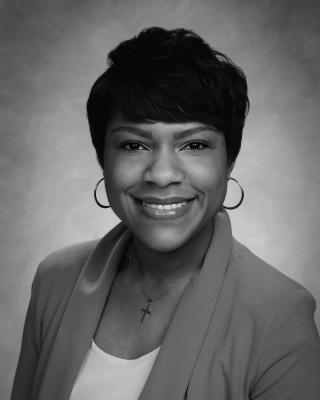

By Jennifer Poindexter, Explore St. Louis
It’s that time of year when Mother Earth celebrates the female game changers in St. Louis.
From Sacagawea, Mary Meachum, Maya Angelou, and Jackie Joyner-Kersee — with hundreds in between and since — women have left their indelible mark on the city’s vibrant history.

Etched into the fabric of this riverfront metropolis are the footprints of activists, authors, inventors, educators, artists, politicians, entertainers, suffragists, military officials, athletes, chefs and civic leaders. No field or industry here is void of a St. Louis woman’s touch. And to give voice to their impact? Paying it forward are numerous female CEO’s and business owners within the hospitality and travel industry who continue to tout St. Louis’ viability and resilience.
St. Louis and the world will celebrate the social, economic, cultural and political achievements of these and all women on International Women’s Day on March 8, which also falls within Women’s History Month in the United States. The day has been designated as an official United Nations observance since 1975 and is a national holiday in many parts of the world.
Upon whose St. Louis shoulders do today’s women stand? A few of the city’s many illustrious female forbearers include Harriet Scott, who fought for her freedom alongside her husband at the Old Courthouse; Frankie Muse Freeman, a civil rights attorney who was the first women appointed to the United States Commission on Civil Rights; and abolitionist Mary Meachum, who helped free slaves through the Underground Railroad. The church Meachum and her husband founded, First African Baptist Church (now First Baptist Church), is still in operation today.
Others local female trailblazers include Katherine Dunham (dancer, author, educator); businesswoman and inventor Annie Malone; entertainer and civil rights activist Josephine Baker; Frankie Muse Freeman, first female attorney appointed to the United States’ Commission on Civil Rights; U.S. Representative for California’s 43rd congressional district, Maxine Waters; singers Tina Turner (12-time Grammy winner), Grace Bumbry SZA Angela Winbush, and Fontella Bass; Ntozake Shange a playwright poet and feminist; actress Jennifer Lewis; uber fashion model Kimora Lee Simmons
This, of course, is just the tip of the iceberg, in terms of local women who have and — continue — to inspire and cultivate pride for our city. Those tasked with championing St. Louis within the hospitality industry are just as plentiful. Below are a few of the many women businesses and attractions that you can visit and support.
Khalia Collier, the owner of St. Louis Surge and VP of Community Relations at St. Louis City SC, has a working Motto: “Don’t just play the game. Change it.” Collier will continue to channel her passion for sports management and community development as she redefines winning
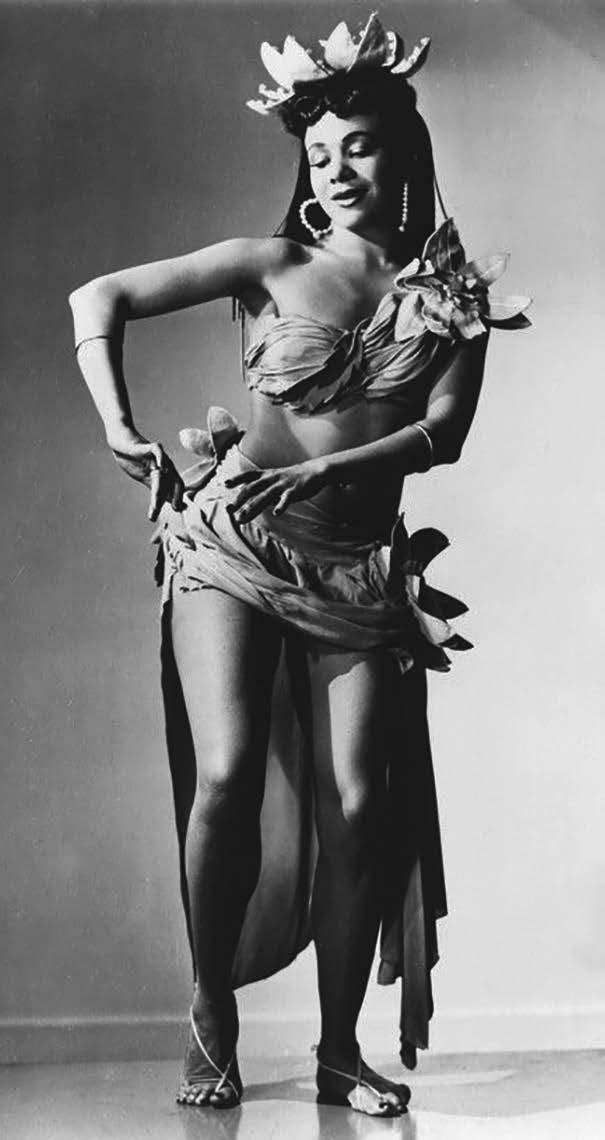
through community impact and outreach. Simone Faure, co-owner & Executive Pastry Chef of La Patisserie Chouquette, produces some of the more mouth-watering and artful creations that have inspired thousands of Instagram posts. Her delicate macarons filled with jams, curds and creams satiate any sweet tooth. Olivia Ridgel, the owner of C. Oliver Coffee + Flower Bar has opened up two locations, one in Maplewood and the other in the St. Louis Galleria, both with an Instagram-able floral wall drawing that attracts local café au lait aficionados. Oliva was inspired by her parent’s love for the regular cup of Joe when she opened up her Maplewood shop in 2019. On the Nonprofit side, Leslie Gill, President of Rung for Women, leads an organization for women to grow and achieve sustained independence through co-located and coordinated educational, professional, and economic resources. The nonprofit is bringing nine other nonprofits under one roof, as well as childcare, healthcare, a gym, and a community garden, in addition to providing career coaching, financial planning, and professional development.
Stop by these businesses and others listed in Explore St. Louis’ most recent Blog Post, Celebrating Women’s History Month in St. Louis, to honor Women’s History Month.






By Lara Hamdan, Emily Woodbury St. Louis Public Radio
St. Louis based Edison
Agrosciences say sunflowers are capable of becoming the world’s next best source of natural rubber.
Manufacturers who depend on rubber for their product typically source the rubber from Asia, where most of the world’s natural rubber is harvested. But an 8-year-old St. Louis company wants to change that.
“The world’s supply of natural rubber is at risk,” said David Woodburn, the CEO of Edison Agrosciences. “Ninety percent of it or so comes from Southeast Asia … not only from the same plant species, but really, clones of [the] exact same trees. So once you have that type of concentration, pests — whether it be disease or insects — if they take hold, things can move fast.” Case in point, Woodburn said, is what happened in the early 20th century, when almost 100% of the world’s supply of natural rubber came from South America.
“It all came from the Hevea rubber tree until the South American leaf blight set in, and now there’s essentially no commercial rubber produced in South America,” he said. “It’s only a matter of time before that hits Southeast Asia, and that’s what we’re trying to work [on]. We’re trying to avoid the rubber apocalypse that is really likely to happen — we just don’t know exactly when.”
To avoid such a scenario, researchers at Edison Agrosci-
ences are working to develop alternative rubber crops. And it’s found a product that it believes can become a source of homegrown rubber: sunflowers. They believe that sunflower petals are capable of becoming the world’s next best source of natural rubber — one day meeting 75 to 80% of the world’s demand. When the company planted 121 varieties of sunflower and measured the rubber content from each type, they found that some produced 0.2% in the leaves, and others at 1.8%.
While that’s a small amount, Woodburn sees potential. “You look at that difference — that’s a nine times difference between the heaviest producers and the lightest producers. So that’s one approach we can take, is to understand what’s causing that difference, and then just exploit that natural variation in the crop.”
The expensive part of natural rubber production is in the extraction process. Woodburn said that once they have a sunflower variety that produces 3% natural rubber, it will be economically feasible to use the plant to create the product.
“Ideally, we’d get it up to 5 or 6%,” he said.
The company recently received support from Arch Grants and investors, and landed a $1 million research contract with the Defense Advanced Research Projects Agency, a branch of the U.S. Department of Defense. The funds will allow them to continue their research using gene editing technology to increase the sunflower’s natural rubber


production.
In two years, Woodburn would like to see the company at a point where they have a sunflower variety that produces at least 3% or more of natural rubber “in the lab, in the greenhouse and a few very small field trials — to show that we have seen a large improvement and now we’re ready to scale that up.”
Currently, the rubber market is valued at $100 billion annually, with natural rubber making up $42 billion of that estimate. The United States does not produce natural rubber of its own, and relies heavily on importing it.
Reprinted with permission of content partner St. Louis Public Radio.


With Earl Austin Jr.
Lift for Life Academy has continued to make history in boys and girls basketball on a weekly basis during the postseason. Both teams won their first district championships ever and followed up by advancing to the Final Four of the state tournament for the first time.

The Lady Hawks took things to a different level in Springfield as they came away with the Class 3 state championship, the first in the school’s history. They won the championship in dramatic fashion as they staged fourth-quarter rallies in both games. Lift for Life rallied from a 16-point fourth quarter deficit to defeat Steelville 60-59 in the semifinals last Friday night, then came back from a seven-point deficit in the fourth quarter to defeat Skyline 56-52 in the state championship game. The leader of the Lady Hawks’ surge was junior guard Taylor Brown, who averaged 21 points in the two Final Four games.
Large Schools
head to Final Four
The St. Louis area will be well represented at this weekend’s Missouri State High School Activities Association boys and girls state basketball championships in Springfield. There will be a total of 11 teams (six boys and five girls) that will be Final Four participants at the JQH Arena on the campus of Missouri State University. For some, this well be a brand new experience while for others, a trip to the Final Four is old hat. Here is a look at the area teams at this weekend’s state tournament.

Class 6
Chaminade will be making its sixth Final Four appearance in the last seven years of the boys’ state tournament. The Red Devils while be taking on a powerful Springfield Kickapoo team in the semifinals on Friday afternoon Chaminade is led by 6’10”
junior Tarris Reed Jr. In the other semifinal, Fort Zumwalt North will be facing Liberty.
Zumwalt North is making its first Final Four appearance in the school’s history. The Panthers are led by its dynamic duo of 6’7” senior KJ Lee and 6’10” junior Connor Turnbull. On the girls’ side, Incarnate Word Academy will be seek-
ing its seventh state championship in the last nine years.
The Red Knights rallied to defeat Columbia Rock Bridge in the state quarterfinals to earn its return trip to the Final Four. IWA is led by stellar junior point guard Saniah “Big Game” Tyler and sophomore forward Natalie Potts.
Whitfield’s Kelsey Blakemore making a break through on Cardinal Ritter’s Kristin Booker during the Class 5 state quarterfinal, Saturday, March 13, 2021 at Whitfield.
Webster Groves will also bring a talented girls’ team to the Final Four this weekend.
The Stateswomen are led by seniors Gabriela Moore and Ja’mise Bailey and juniors Ellie Paloucek and Eliza Maupin.
Class 5
Cardinal Ritter is back in the Final Four after winning
a state championship in Class 3 last season. The Lions are making their debut in Class 5 this season. They won close games against University City and DeSmet en route to another Final Four appearance. The Lions are led by 6’3” senior Mario Fleming, 6’8” junior Robert Lewis and 6’4” junior Braxton Stacker.
Also advancing to the Final Four is Lutheran South, who is making somewhat of a surprising postseason run. The Lancers have been excellent in the playoffs with its dynamic duo of 6’7” senior Jack Lawson and 6’3” senior Jonathan Prange. On the girls’ side, Whitfield is in the Final Four for the fourth consecutive year. The Warriors finished third in the Class 3 state tournament last season. They are young and talented, but the leader is 5’9” senior point guard Kelsey Blakemore. Union is also making the trip to Springfield, led by its talented senior point guard Reagan Rapert.
Class 4
The Vashon Wolverines are back in the Final Four to make another run at a state championship, which they won in three of the past four years. The Wolverines are led by its outstanding senior duo in 6’6” forward Nick Kern and 6’4” senior point guard Keshon Gilbert. Vashon’s boys will have company in Springfield this weekend as its girls team will be making its first ever appearance in the Final Four. The girls’ team fields a talented unit as well, led by 5’10” senior Auburn signee Marshaun Bostic and 5’11” sophomore guard Raychel Jones.
Westminster Christian’s boys will be making its first Final Four appearance since 2005. The Wildcats have a well-balanced team led by its talented backcourt of junior Casen Lawrence and sophomore Kobi Williams.
The New Orleans Pelicans became the first major sports franchise in America to announce “some” of its players and staff had received a first vaccination shot. Why not “all?” In a game where good shots mean everything, why are some players refusing to take one of the most important ones of their lives?
NBA Commissioner Adam Silver said last month that players would not be mandated to get vaccinated –which I think would be a tremendous idea.
concluded that 73 percent of Black Americans and 70 percent of white Americans surveyed said that “they either planned to get a coronavirus vaccine or had done so already.”
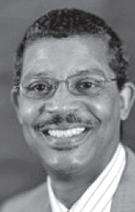
If there was any league, anywhere that should have its players, coaches and staffs willing to voluntarily be vaccinated at a 100 percent level, it is the NBA.
One reason is because the NBA has been the beacon of responsibility over the last year in confronting COVID-19 while protecting its teams.
Another, and most importantly, is because most of its players are Black.
An NPR/PBS NewsHour/ Marist poll released Monday,
I guess that is good news. Here is the bad: Twentyfive percent of Black and 28 percent of white respondents said, “they did not plan to get a shot.” The Latino hesitancy rate was at 37 percent.
These numbers are too high because Black people are three times more likely to get COVID-19 and die from the virus than white people.
NBA players, and all Black professional and college athletes, should take to social media and triumphantly announce when they receive their respective vaccinations.
LeBron James said last week that he will “keep private” whether he and his family get vaccinated.
Again, why should it be secret???
James and other players can

help end the rumor mongering and fear that plague the Black community.
The infamous and tragic Tuskegee Syphilis Study began in 1932. If you were born that year, you will turn 89 in 2021. That can no longer be used as an excuse to avoid a COVID19 vaccination – or any other type of health care.
Hopefully, youthful star Zion Williamson was among the New Orleans Pelicans players and coaches that were vaccinated recently. He should share that news with the Black community if he volunteered to receive a shot.
“I got the first Covid vaccine shot...I feel lucky that I had this opportunity. Can’t wait to get second shot in three weeks. If you can, get it,” Pelican forward Nicolo Melli wrote on Twitter.
“In my opinion, the more people we can encourage to get vaccinated, the better off all of us are going to be,” Pelicans
coach Stan Van Gundy said. It would really be helpful if young Pelican star Zion Williamson announced that he had been vaccinated. His silence worries me. This is a perfect chance for NBA players to be health role models and get the Black community on the rebound from COVID-19.
The Reid Roundup Yes, I am vaccinated. My wife will get her second shot in two weeks…As of Tuesday, “the majority” of Virginia’s NCAA bound men’s basketball team remained in quarantine after COVID protocol forced it to leave the ACC Tournament…The Kansas Jayhawks traveled to Indianapolis without three quarantined players after withdrawing from the Big 12 Tournament…Respected veteran Black official Ted Valentine was one of six referees eliminated from working the NCAA Tournament. One tested positive for COVID-19 and five must quarantine… UConn women’s basketball
coach Geno Auriemma tested positive for COVID-19 on Sunday and is isolating at his home. He will miss the beginning of the women’s tournament…Major League Baseball has teamed with several historic Black churches to set up drive-through events where baseball dignitaries will hand out equipment and gear to any youth attending. The first was in Washington, D.C., and others are planned in Philadelphia, Richmond, Va., Oklahoma City and Charleston, S.C. The St. Louis Cardinals should do the same, regardless of the MLB plan.
Alvin A. Reid was honored as the 2017 “Best Sports Columnist – Weeklies” in the Missouri Press Association’s Better Newspaper Contest and is a New York Times contributor. He is a panelist on the Nine Network program, Donnybrook, a weekly contributor to “The Charlie Tuna Show” on KFNS and appears monthly on “The Dave Glover Show” on KMOX.
By Anna Almendrala Kaiser Health News
In the hospital with CO-
VID-19 in December, Lavina Wafer tired of the tubes in her nose and wondered impatiently why she couldn’t be discharged.
A phone call with her pastor helped her understand that the tube was piping in lifesaving oxygen, which had to be slowly tapered to protect her.
Now that Wafer, 70, is well and back home in Richmond, California, she’s looking to her pastor for advice about the COVID vaccines. Though she doubts they’re as wonderful as the government claims, she plans to get vaccinated anyway — because of his example.
have tried to suggest that taking the vaccine, social distancing and protecting themselves in their household is something that God requires us to do as good stewards.”
n “People get a lot of emotional support, people get resources, and their pastor isn’t just looked upon as a spiritual leader, but something more.”
“He said he’s not going to push us to take it. It’s our choice,” Wafer said, referring to a recent online sermon that praised the vaccines as God-given science with the power to save. “But he wanted us to know he’s going to take it as soon as he can.”
- Sabrina Saunders Founder, One Accord Project
Helping people accept the COVID vaccines is a public health goal, but it’s also a spiritual one, said Henry Washington, the 53-year-old pastor of The Garden of Peace Ministries, which Wafer attends. Clergy must ensure that people “understand they have an active part in their own salvation, and the salvation of others,” said Washington. “I
Many Black Americans look to their religious leaders for guidance on a wide range of issues — not just spiritual ones. Their credibility is especially crucial on matters of health, as the medical establishment works to overcome a legacy of experimentation and bias that makes some Black people distrustful of public health messages. Now that the vaccines are being distributed, public health advocates say churches are key to reaching Black citizens, especially older generations more vulnerable to severe COVID disease. They have been hospitalized for COVID and died at a disproportionate rate throughout the pandemic, and initial data on who is getting COVID shots shows that Black people lag far behind other racial groups. Black churches have also suffered during the pandemic. African American pastors were most likely to say they had had to delete positions or cut staff pay or benefits to survive, and 60% said their congregations hadn’t gathered in person the previous month, as opposed to 9% of white pastors, according to a survey published in October by Lifeway Research, which
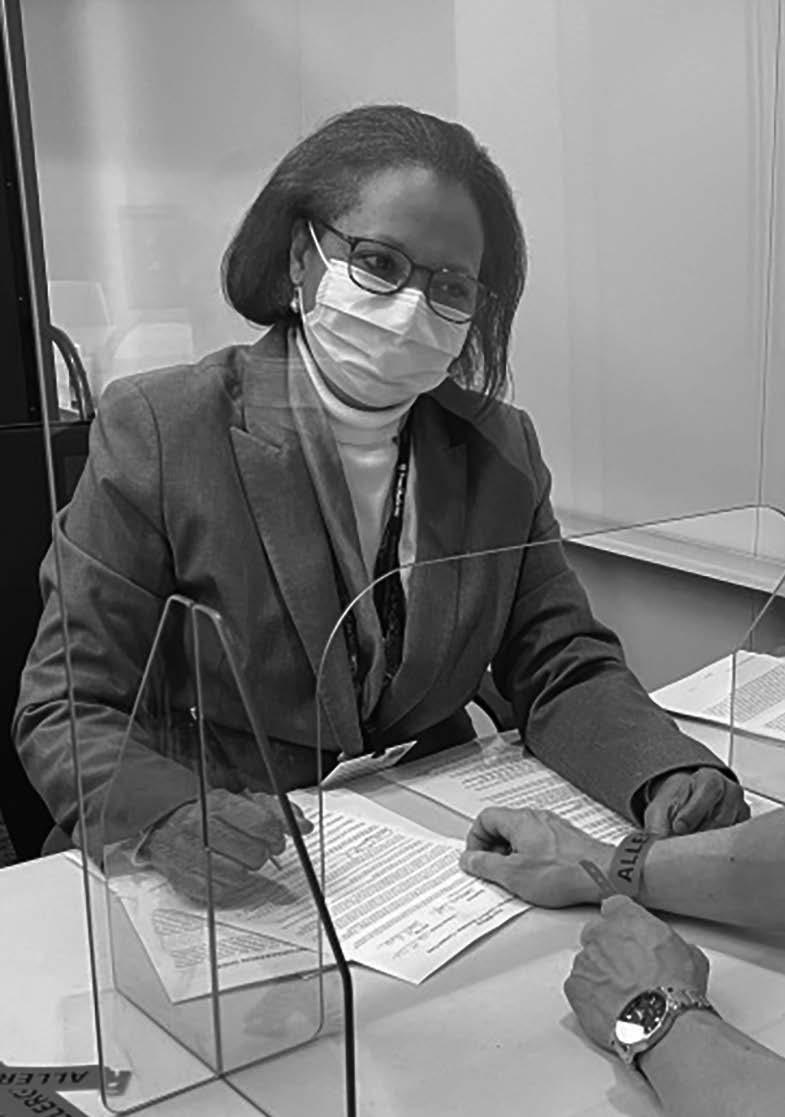
specializes in data on Christian groups.
Washington’s 75-member church is in Richmond, which has the highest number of COVID deaths in Contra Costa County, outside of deaths in long-term care facilities. The very diverse city, across the bay from San Francisco, also has one of the lowest rates of vaccination.
Offerings to Washington’s church plunged 50% in 2020 due to job loss among congre-
By James A. Washington Jr.
Do any of you remember that certain Sunday when moved to accept the truth of your own salvation? I did recently. I was asked a very simple question by the new member deacon: “Do I believe in Jesus Christ?” For all of the angst I was feeling about a very public declaration of faith, hindsight reminds me that such a simple question should have been quickly answered with exhilarating affirmation. But my recollection is that it was not. That story I’ll share with you later. My point here is that then as now, it was all about Jesus. I mean the simplicity of salvation is so easy to comprehend. We tend to complicate things because we live in a world which, in many ways, is influenced by Satan.
As my former bible study classmates used to say, Satan is as slick as they come. He has a 24/7/365 job, which he relishes, and why not. We keep him highly motivated.
One of my favorite parts of the bible, and one that I would ask you to read and reread is the confrontation between Jesus and the devil. It’s all right there. What Lucifer tempts Jesus with is what he traps us with.
The Son of Man is the only human being strong enough to win the battle of good and evil so decisively. We need all the help we can get, and that help is identified in Matthew 4:1-11. Each time the devil tried to get Jesus to prove Himself, or entice Him to worship Satan, Christ’s’ reply was: “…It is written.”

Christ’s fallback position at this critical moment for all of us was to rely on the scripture. We have it affirmed for us that we win the battle of life and death and life (eternal) with the ammunition provided to us as it is contained in the Word.
If you take nothing else from what I’m saying, take this: Never go to a gunfight with an unloaded gun. For God’s sake, (or should I say your own), take some ammunition. If Christ used the Word to win His battle, I think we’re compelled to try and do the same thing with ours. I’m
moved by this part of the bible because it shows that by following Jesus’ example, salvation is there for us to share in.
I have also found it ironic that once the devil was defeated in the desert, the bible says “… angels came and attended Him (Jesus).”
Everything — and I do mean everything and more — that the devil offered, God granted.
Now on my salvation Sunday, I kept thinking that there had to be more to being saved than three simple affirmations of faith: Yes, I believe in Jesus, yes, I believe He is the Son of God and yes, I believe He died for my sins and rose again, lives and He will return. That’s it.
Now, go back and read about the greatest battle in history. Remember who won and why. Now for His sake and your own, arm yourself with the Word and go fight your battles of this day.
Remember, that’s all they are, battles. You’ll win some and you will definitely lose some, but read and recognize, the war is over. We win.
May God bless and keep you always.
James A. Washington Jr. is publisher of the Dallas Weekly

Dr. Judith Green McKenzie, chief of the division of occupational medicine at the University of Pennsylvania’s Perelman School of Medicine, helps an employee fill out a consent form. She hopes that older people who get a COVID vaccine can go on to influence younger relatives when their turn comes.
Photo by Daniel Burke / Penn Medicine
out the pandemic, the calls have focused on connecting pastors with public health officials and epidemiologists to make sure they have the most up-to-date information to pass on to their members, said founder Sabrina Saunders.
gants, but he’s weathered the pandemic with a small-business loan and a second job as a general contractor remodeling bathrooms and kitchens.
To combat misinformation, he’s been meeting virtually with about 30 other Black pastors once a month in calls organized by the One Accord Project, a nonprofit that organizes Black churches in the San Francisco Bay Area around nonpartisan issues like voter registration and low-income housing. Through-
The African American church is an anchor for the community, Saunders said. “People get a lot of emotional support, people get resources, and their pastor isn’t just looked upon as a spiritual leader, but something more.”
And guidance is needed
The share of Black people who say they have been vaccinated or want to be vaccinated as soon as possible is 35%, while 43% say they want
to “wait and see” the shots’ effects on others, according to a KFF survey. Eight percent say they’ll get the shot only if required, while 14% say they definitely won’t be vaccinated.
Among the “wait and see” group, 35% say they would seek information about the shots from a religious leader, compared with 28% of Hispanics and 14% of white people.
Grassroots outreach to Black churches happens in every public health emergency, but the pandemic has hastened the pace of collaboration with public health officials, said Dr. Leon McDougle, assistant dean for diversity and cultural affairs at the Ohio State University College of Medicine. The last time he saw such a broad coalition across Black churches, medical associations, schools and political groups was during the HIV/ AIDS epidemic in the 1980s.
“This is at an entirely different level, though, because we’ve had almost half a million die in a year,” McDougle said of the COVID pandemic.
Church attendance is waning among young Black adults, as it is for other races. But elders can set examples for younger people undecided about the vaccine, said Dr. Judith Green McKenzie, chief of the division of occupational medicine at the University of Pennsylvania’s Perelman School of Medicine.
“When they see their grandma go, they may say, ‘I’m going,’” she said. “Grandma got this two months ago and she’s fine.”
Republished with permission of content partner Kaiser Health News. (Edited for length)







This
The City of Clayton is hiring for a full-time Plans Examiner. Apply by 3/26/21: https://claytonmo.applicantpro. com/jobs/ EOE
The City of Clayton is hiring for a full-time Police Officer or Police Officer in the Academy. Apply by 4/16/21: https://claytonmo.applicantpro. com/jobs/ EOE



Creve Coeur, O’Fallon, St. Charles, & St. Peters Commercial and Medical Office Buildings $11.00 hour
Day Porter: Mon-Fri: 7:30am - 2:30 pm (I-64/Winghaven Blvd). Evening Custodians: Monday - Friday: 5:30pm -9:30pm (4-8 hour shifts) Required: 21+; Clear Police Background Check: Valid Driver’s License, Stable Work History, Must like to clean and have attention to detail. Duties: Pull trash, dust, clean and restock restrooms and kitchens, mop and vacuum floors, other duties as required.
Contact: 636-444-9055 Apply: www.janitron.com
Nurses - $70/hr. for Psych, ICU and ER RNs. Immediate & flexible start dates in Centreville, IL. Flexible scheduling available on all shifts. Fully employer-paid medical & dental. Immediate vesting in 401(k) with 6% employer contribution. All nursing backgrounds will be seriously considered. Call Vicki at Worldwide 866 633 3700, x 108.
MARKETING AND COMMUNICATIONS COORDINATOR
Trailnet

Complete details can be found here https://trailnet.org/2021/03/05/ were-hiring-marketing-andcommunications-coordinator/
Plumbers & Pipefitter’s Local Union #562 will be accepting applications the 1st Tuesday of every month from 8:30am-10:30am. Applications will be available at our Training Center, 3755 Corporate Trail Drive, Earth City, MO 63045. Due to large number of applications, we have a sign-up sheet on our website. Each applicant will have to fill out the form on our website before coming to fill out an application. It is under than monthly applications tab on our website. You must be 18 years of age or older, have a high school diploma or a G.E.D to complete an application. A drug-screening test will be required for employment. Random drug and alcohol testing are required thereafter. Please No Phone Calls.
MEDICAL ASSISTANTS, LPNS, RNS & REGISTRATION SPECIALISTS
Affinia Healthcare has immediate openings for the following positions: Medical Assistants, LPNs, RNs and Registration Specialists. You will be assisting current staff in our vaccination clinics or with Covid testing. These positions are currently temporary but may lead to a permanent full time opportunity for the right candidate. For consideration and additional information please apply online at www.affiniahealthcare.org/about/ careers or fax an updated resume to 314.814.8525. Affinia Healthcare is an Equal Opportunity Employer and a Tobacco and Drug –free workplace. EOE/M/F/Vet/Disabled.

Jefferson Franklin Community Action Corporation’s Weatherization program is soliciting sealed bids for the following in Jefferson and Franklin County, Missouri:
1) Contract to provide insulation, air sealing, and carpentry work between July 1, 2021-June 30, 2022 with a yearly renewal option of up to two years.
2) Contract to provide heating, ventilation, air conditioning, and water heater service between July 1, 2021-June 30, 2022 with a yearly renewal option of up to two years.
Request bid packets or information at P.O. Box 920, Hillsboro, MO 63050, or e-mail wx@jfcac.org, or call (636)789-2686 option 2. A virtual pre-bid meeting will be held on-line, April 15th 9:00am, e-mail for access. Small, minority and women owned businesses are encouraged to apply.
Mailing of Bid packets begins April 1, 2021 with a bid deadline, April 29, 2021 at 2:00pm.
Jefferson Franklin Community Action Corporation (JFCAC) reserves the right to reject any and all bids, in whole and in part.
Weatherization is funded with 75% Federal funds, or $810,484 and 25% private funds, or $270,162 and partially administered by the Missouri Department of Natural Resources/ Division of Energy.
JFCAC is an Equal Opportunity Agency.
Paric Corporation is seeking proposals for the following project: Mizzou Sports Arena – Basketball Renovations for the University of Missouri in Columbia, MO.
This is the renovation of the Basketball Locker Rooms, Coaches locker Rooms with support areas. The project consists of approximately 10,842 SF of space and includes but is not limited to demolition, carpentry, architectural woodwork, doors/frames/hardware, drywall, tile, acoustical ceilings, flooring, painting, fire sprinklers, plumbing, HVAC and electrical work.
This project has a diversity participation goals of 10% MBE, 10% combined WBE, DBE, Veteran Owned Business and 3% SDVE.
Bids for this project are due on March 23rd, at 10:00 a.m. For any questions or would like to find out more detailed information on this opportunity, please contact John Davis at 314-704-6075 or jcdavis@paric.com.
All bids should be delivered to Paric via e-mail (bids@ paric.com) or fax (314-561-9501).
PARIC CORPORATION IS AN EQUAL OPPORTUNITY EMPLOYER
Poettker Construction Company is seeking bids from minority and disadvantaged businesses for the MUHC – Psychiatric Center Infrastructure Upgrades Serving Level 1 and Renovate 1N for Adult Assessment and Observation Unit at the University of Missouri in Columbia, MO. A Diversity Participation goal of 10% MBE / 10% Combined WBE, DBE, Veteran Owned Business and 3% SDVE has been established for this contract. All interested and certified businesses should contact Zach Lindberg at 618-526-3339 or zlindberg@poettkerconstruction.com to discuss opportunities. All bids must be received by EOB on Monday, March 29th. Bid documents are available for download through the following link: https:// securecc.smartinsight.co/#/PublicBidProject/569922.

400 South Germantown Road Breese, IL 62230
Phone: 618-526-7213
Fax: 618-526-7654
RFP #: 57821077
REQUEST FOR PROPOSAL
ARCHITECTURAL DESIGN SERVICES FOR PROGRAM OF REQUIREMENTS –STUDENT CENTER
Harris-Stowe State University (HSSU) is requesting proposals for architectural design services for a Program of Requirements – Student Center. Interested parties may obtain a copy of the Request for Proposals by emailing: morrowb@hssu.edu.
ELECTRONIC PROPOSALS MUST BE RECEIVED NO LATER THAN: 10:00 a.m. on Wednesday, April 7, 2021 and should be emailed to morrowb@hssu.edu . A link to attend the virtual bid opening will be emailed out to all attendees at the mandatory pre-bid meeting at a later date.
MANDATORY PRE-BID CONFERENCE: A mandatory pre-bid conference and walk-through will be held on Wednesday, March 31, 2021 at 10:00 a.m. in Room 311 in the Dr. Henry Givens, Jr., Administration building, 3026 Laclede Avenue, St. Louis, MO 63103. Masks will be required for entry into the facility and also at the pre-bid conference and walk-through. Social distancing will also be required in all facilities.
The University reserves the right to reject any and all proposals and to waive all informalities in proposals.
ST. LOUIS COMMUNITY COLLEGE
St. Louis Community College will receive separate sealed bids for CONTRACT NO. F 21 503, Replace A/C Unit in Service Building at St. Louis Community College at Florissant Valley Campus, until 2:00 p.m. local time Tuesday March 30, 2021. Bids will be publicly opened and read aloud at the office of the Manager of Engineering and Design, 5464 Highland Park, St. Louis, MO 63110-1314. Specifications and bid forms may be obtained from the Manager’s office, at the above address or by calling (314) 644-9770. An Equal Opportunity and Affirmative Action Employer
VOLUNTARY PREBID MEETING: March 17, 2021 10:00am, West Side of Service Building at Florissant Valley
ST. LOUIS COMMUNITY
St. Louis Community College will receive separate sealed bids for CONTRACT NO. F 21 504, Roof Replacement at Service Building at Florissant Valley at St. Louis Community College at Florissant Valley Campus, until 2:00 p.m. local time Thursday, April 1, 2021. Bids will be publicly opened and read aloud at the office of the Manager of Engineering and Design, 5464 Highland Park, St. Louis, MO 63110-1314. Specifications and bid forms may be obtained from the Manager’s office, at the above address or by calling (314) 644-9770.
An Equal Opportunity and Affirmative Action Employer
VOLUNTARY PREBID MEETING: March 22, 2021 10:00am, Florissant Valley, Service Building
Sealed bids for the Musick Avenue Pedestrian Signal, St. Louis County Project No. CR-1760, will be received electronically thru the County’s Vendor Self Service portal at https://stlouisco.munisselfservice. com/Vendors/default.aspx, until 11:00 a.m. on April 14, 2021
Plans and specifications will be available on March 15, 2021 from the St. Louis County Web Site (www. stlouiscountymo.gov) or by contacting Cross Rhodes Print & Technologies, 2731 South Jefferson Avenue, St. Louis, Missouri 63118 (314) 6780087.
DIRECTOR OF PROCUREMENT AND ADMINISTRATIVE SERVICES ST. LOUIS, COUNTY
Bids for Roof R e p l a c e m e n t , Housing Unit 4, MO State P e n i t e n t i a r y, Jefferson City, MO. Project No. O2113-01 will be received by FMDC, State of MO, WITHIN T H E N E X T 30 DAYS. For specific project i n f o r m a t i o n including the finalized bid date and ordering plans, go to: http://oa.mo. gov/facilities
B i d s f o r Constructions Services –St. L o u i s a n d Southeast Regions, P r o j e c t N o . IDIQMCA-1004, will be received by FMDC, State of MO, UNTIL 1:30 PM, 4/1/2021 via MissouriBUYS. Bidders must be registered to bid. For specific project information, go to: http://oa.mo.gov/ facilities
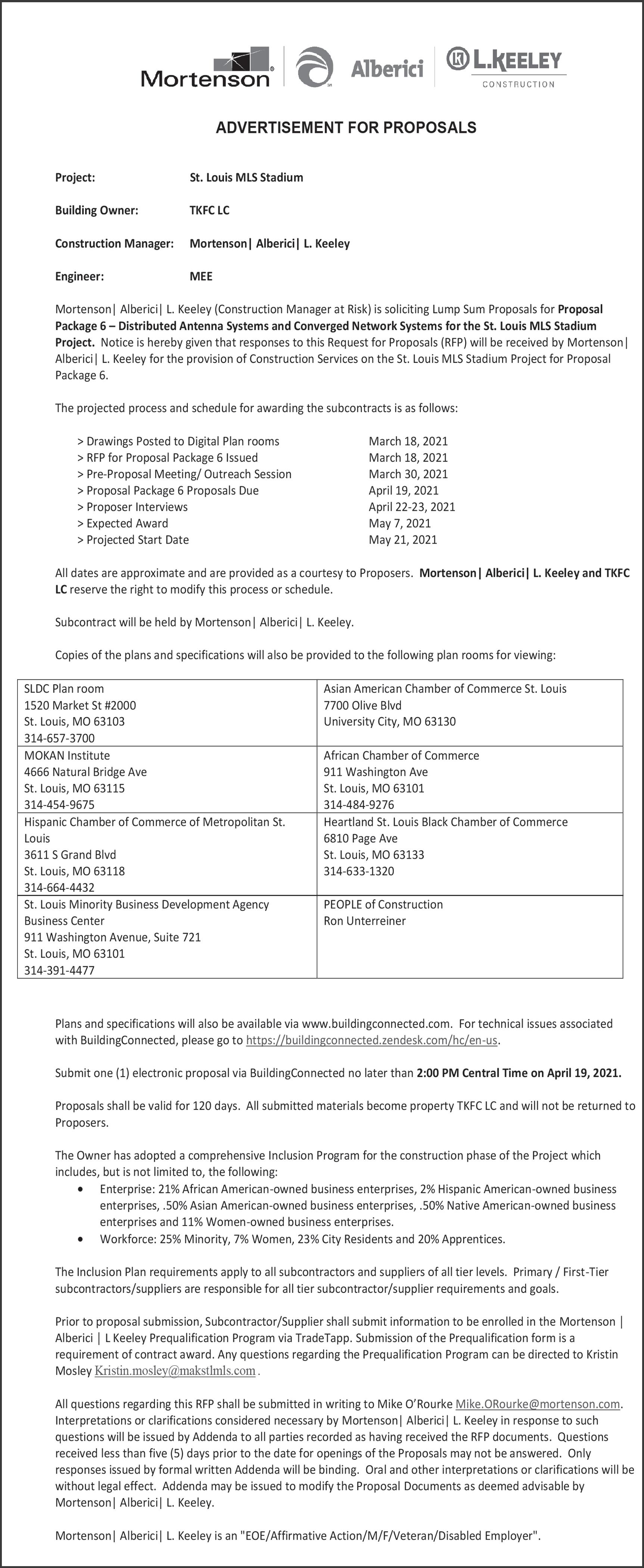
Normandy Schools Collaborative will be accepting sealed General Contractor Bids for the construction of renovations to their West Hall Building at the Normandy High School. The entire bidders package will be available electronically on Thursday, March 18, 2021 through TR,i Architects, matt.miller@triarchitects.com . A Mandatory Pre-Bid walk through will be held at 2:00pm (CST) March 29, 2021 with Bids being due on Thursday April 8, 2021 at 2:00 PM (CST). To download the entire Advertisement for Bidders please go to the following website: www.normandysc.org or for an emailed copy contact Matt Miller, with TR,i Architects, at matt.miller@triarchitects.com .
Great Rivers Greenway is requesting for bids for terrazzo floor refinishing in Gateway Arch National Park Visitor Center & Museum. Go to www.greatriversgreenway. org/jobs-bids and submit by April 16, 2021.
Great Rivers Greenway is requesting Bids for the application of protective coating to exterior bollards in Gateway Arch National Park. Go to www.greatriversgreenway. org/jobs-bids and submit by April 2, 2021.
Reinhardt Construction LLC, Inc. Is Soliciting Bids MBE/WBE/ DBE/Veteran/SDVE for the following; University of Missouri, Columbia University Mizzou Sports Arena – Renovate Basketball Spaces Bid Date: 3/23/21 @ 1:30pm Contact: Mike Murray, mikem@ reinhardtconstructionllc.com Phone: 573-999-1329
Great Rivers Greenway is requesting Bids for installation of Eco Counters and Bike Fix It stations. Go to www.greatriversgreenway. org/jobs-bids and submit by March 25, 2021.
Continued from B1
had her own trials to overcome. For four years she struggled to recover from her 2014 divorce.
“I didn’t realize I didn’t handle disappointment well until that struck me,” Smith said. “I had to tell myself, ‘Precious, you’re so much more than where you are. You’re so much more than what you’ve become’.”
The life experience and lessons she gained from her divorce have helped her steer her clients’ journey to inner growth.
“I challenge my clients to not throw themselves a pity party and say ‘why me’ but instead say what am I supposed to learn from this,” Smith said. “I’m
Continued from B1
a newborn son. She’s had to juggle with changing school schedules and work. She was relieved when her daughter’s school finally reopened so she could get back to work. Family helped out with her newborn.
“I had to go back in order to make ends meet,” Shelton said.
Both Watson and Tomlin also have had to deal with the challenges of changing school schedules. This change was
big on helping people embrace disappointment. I encourage [them] and say, ‘hey look, disappointment is gonna make an appointment with all of us at some point’.”
In addition to being a life coach, Smith works full-time as the manager of career preparation with Rung for Women, a non-profit organization that improves the lives of women through professional and personal development. She also is a motivational speaker, radio personality with Mix 99.5, a mentor to young girls and women, and a volunteer track coach.
Since the start of the pandemic, Smith has published two books, “Whatever It Takes EVOLVE” and “Confronting the Age Old Question: Why Me? An Inspired Journey From Pity to Purpose” under her pen
especially difficult for Tomlin’s daughter, who just started kindergarten at a new school.
“She didn’t understand why all of her friends were on the computer, why she couldn’t meet her new teacher in person, or why she couldn’t go anywhere and give anybody hugs,” Tomlin said. “It was really hard trying to teach a five-year-old how to use a laptop so quickly, she got it a week before school started.”
Shelton’s 10-year-old daughter’s school experience differs from Tomlin and Watson. She started off virtually, then eventually Shelton felt comfort-
name Precious Simone.
Initially, she didn’t plan to write books. However, with encouragement and support from different religious leaders she decided to give it a shot.
“When I became an author I was like ‘wow, I have a voice,’ not only through motivating, but through sharing my story in a tasteful way [so] that other people can be inspired.”
Despite the country’s current state, Smith has a message of hope for everyone.
“My message of hope is to embrace where you are,” said Smith. “Make the adjustments that are needed, and not lose sight of your dreams, goals, and visions.”
To learn more about Smith or to book her services, visit: https://www.precioussimone. com/.
able with her returning to the classroom.
“Of course I get leery because of the pandemic, but it was easier for me to send her back to school since I work full-time.” Shelton said. Watson and Tomlin both agree that being at home with their families during the pandemic has its pros and cons.
“It got to a point where we were getting on each other’s nerves from spending too much time together,” Tomlin said. “I started to look at it differently, because normally my husband would be at work. Now, we get to spend more time together.”
Continued from B1
that I had to produce works that weren’t just 2D, that these words couldn’t just speak on blackness and black suffering and environmental degradation. I had to actually do something.
Davis: How does the Close the Workhouse campaign reflect environmental racism? How do they connect in your opinion?
Weber: One of the main things that Close the Workhouse has as a demand or as a complaint is lack of nutritional food. Another thing is just the sheer amount of mold and air quality within the workhouse. I think that when you go back to violence on the land and violence in the body, there›s that very distinct connection with the things that are happening in the complaints at Close the Workhouse and things that are actually consistently happening in our communities are black, brown and Indigenous communities that we might not as a whole, be completely aware of.
Davis: Do you have an idea of what a project would look like?
Weber: Man, I’m obsessed with Spring Church. I have family members in St. Louis, and I’ve been looking at that church for a good 10 years. Like man, I’ve got to do something in this space. The second I saw that the Pulitzer acquired it, [I asked] is there any possibility that I can do a project in collaboration with Close the Workhouse that would deal with healing and also connect individuals that were formerly incarcerated at the workhouse to some sort of programming, with either farming or urban gardening?
We’re really looking at that Spring Church as an activation in a way to build some sort of structure for spiritual healing, and giving tools for spiritual connection or just decompression and dealing with trauma in general and connecting that to some sort of work or some sort of connection to land. We know that
green space really helps the psyche deal with trauma and with stress, and we know that we have a lack of that in our Black, brown and Indigenous communities.
So that’s going to be the main focus of the project to build something. I have all these grand ideas I don’t even know. We don’t know what’s possible. But we’re really hoping that whatever we build inside that church, we can deconstruct and then reconstruct on a site like THA MUTHASHIP or inner city farm.
Davis: What was it that kind of sparked your focus on environmental racism within your work? How do you describe environmental racism?
Weber: There’s no difference to me between violence on land and violence on the body, because when you dump toxins into the land, the majority of the time that land is going to be occupied by Black and brown folks. And it’s going to deter certain health mechanisms of the Black and brown body.
So there’s all these connections between violence on land and how that affects the Black, brown and Indigenous body. I think that directly relates to overpolicing in the same neighborhoods that are being overpolluted. I’ve always been an environmentalist being from Iowa. My mom, my white side of the family, her sister owned land south of Des Moines, and our way of getting out of the north side as kids was to go to this farmland. My uncle had the foresight to know that we were in these concrete mechanisms where there’s no green space and he would take us to the woods and just dropped knowledge on us all day about the different species of trees, and just spending time in green space. That always was something that I held onto throughout my entire life, just knowing the importance of green space. So it was only a matter of time, like I said, with meeting [artist] Ron Finley, to combine those two things in a way that would interest
people to want to approach art in a completely different way than they normally would. And also approach the natural environment in a way that they normally wouldn’t approach it.
Davis: What got you interested in pursuing art as a professional career?
Weber: It was nothing serious. Growing up, it was always just being taught the basics of painting, charcoal drawing, colored pencils and all that. But it really kind of took off when I got injured in college. I was a collegiate basketball player. I didn’t really have a fallback plan. I dropped out of college after my injury and fell back on art naturally as some sort of coping mechanism. My mom was like, you need to get a job or pay rent. When she told me I had to get a job, you know, I immediately hit my uncle up and started working construction. And I’d work construction during the day and paint at night.
Davis: What were those first artworks that you produced and what did they look like?
Weber: They’re still around, man. It’s like a lot of very pop, Black culture pop work mixed with surrealism, oil paintings, and then the oil paintings kind of started blending into a lot of street art. So a lot of spray paint, oil paint, acrylics on these large canvases.
Davis: How do you see the arts inspiring social change and social justice with the work that you do, and the work of so many other art activists?
Weber: I really think that having the backing of the community and having the backing of institutions like the Pulitzer and in having the backing of other arts organizations that can push in funding, and sustainable funding into a space. I really think that art can push them to these social, societal [movements of acting to counter] great oppression in a way that would hopefully impact them.
Follow Chad on Twitter: @iamcdavis

March 3–31
The Saint Louis Art Museum’s beloved tradition of celebrating art and flowers is virtual!

While many people realize they are facing unparalleled levels of stress and anxiety during the coronavirus pandemic, others may be so busy trying to keep their lives together that they’re not even aware of how frazzled they are. But no one thrives when they constantly feel afraid, exhausted, and overwhelmed, say pharmacist Diana Hendel and Dr. Mark Goulston.
“COVID-19 has pushed many of us into survival mode,” said Hendel, “We are doing what’s necessary to survive, but the stress of continuing to function while under such extreme pressure to carry on eventually takes a toll.”
Hendel and Goulston coauthored the book, “Why Cope When You Can Heal? How Healthcare Heroes of COVID-19 Can Recover from PTSD.”
“It is important to learn to recognize when your stress is rising and take steps to mitigate it,” Goulston said. “Acknowledging what’s going on with your mental health empowers you to do something about it.”
The good news is it doesn’t take much time or effort to reduce stress –even the severe stress so many are facing right now. Hendel and Goulston share advice for recognizing and alleviating COVID-related stress.
Do frequent self “check-ins” to recognize when your stress levels are rising. When you’re busy and under pressure to perform, it’s easy to go on “autopilot.” Therefore, periodically pause and do a quick self-assessment throughout the day. Consider your emotional state (Do I feel friendly and engaged, or edgy and aggressive?) as well as your physical state (Is my body calm and at ease, or is it holding onto tension?).
“Take 20 or 30 seconds to scan your body and identify areas that may be holding onto tension or stress,” Hendel said.
“For example, you might be carrying tension in your jaw or shoulders. When you notice an area that is tense, gently release the tension. Over time it should become easier to recognize when stress begins to take hold – and to do something about it.”
Ground yourself when you start feeling overwhelmed. Grounding is a great way to reduce anxiety and arrive in the here and now. Use it any time you feel carried away by anxious thoughts, feelings, or are triggered by upsetting memories and flashbacks.
• Find a comfortable place to sit (or stand). If sitting, rest your hands on your legs. Feel the fabric of your clothing.
Notice its color and texture.
• Next, bring your awareness to your body. Stretch your neck from side to side. Relax your shoulders. Tense and relax your calves. Stomp your feet.
• Look around and notice the sights, sounds, and scents around you for a few moments.
Pause and take a few deep breaths. We tend to hold our breath whenever we are stressed, but this only exacerbates feelings of anxiety and panic. Instead, use “box breathing” to calm yourself and heighten your concentration. Box breathing is the technique of taking slow, deep, full breaths. Here’s a tutorial for when you’re feeling triggered.
Slowly exhale your breath through your mouth. Consciously focus on clearing all the oxygen from your lungs. Inhale slowly and deeply through your nose for four slow counts. Hold your breath for four more slow counts. On the next four counts, exhale again through your mouth until your lungs are empty. Hold your breath again for a final slow count of four beats.
Reach for something that anchors you in the present moment. Carry a
small reminder of what you love about your life and focus on it if you feel triggered and need to center yourself. It might be a photo of your kids or pet, a small rock you picked up on a scenic nature hike, or a special necklace. Think of the gratitude you feel for your life whenever you look at this token.
Head outdoors for a few minutes. If at all possible, try to get outside for a few minutes of fresh air when you are feeling stressed. Take deep breaths, stretch your arms and legs, and take in the gifts of nature around you. And if possible, invite another person (either someone in your household or a coworker if you are at work) to join you for a 10-minute walk so the two of you can blow off steam.
“When you do nothing about ongoing stress, it can increase until it dominates your life,” Hendel said. “None of us can afford to be sidelined when we need all of our energy to face these current challenges. But it is never too late to take charge of your mental health and build up the resilience that will sustain you through the pandemic and beyond.”
For more information, go to https:// whycopewhenyoucanheal.com/.


Is it time to hit “reset” and start over with fresh dental habits? Doing so can help improve your health. Want to improve your family’s overall health? Start with your dental care routine.
“Your oral and overall health are connected – and even small improvements in your oral health routine can have big payoffs in your overall well-being,” said Dr. Ruchi Sahota, spokesperson for the American Dental Association (ADA).
To help you get started, the ADA offers seven recommendations for improving your family’s dental health routine:
1. Brush twice a day for two minutes each time using fluoride toothpaste and a soft-bristled brush. Place the brush at a 45-degree angle to the gums. Gently move the brush back and forth in toothwide strokes. Brush the outer, inner and chewing surfaces of the teeth. To clean the inside surfaces of the front teeth, tilt
the brush vertically and make up-anddown strokes. Parents should instruct kids to do the same.
2. Clean between teeth daily using only interdental cleaners, such as floss or water flossers, to reduce the risk of cavities and gum disease.
3. Eat a nutritious diet. Sugary foods and snacks can lead to tooth decay. On the other hand, calcium- and phosphorous-rich foods protect and strengthen tooth enamel. Fruits and vegetables are also good choices for a healthy smile since they have high water and fiber content, which help clean teeth.
4. Schedule regular dental visits for prevention and treatment of oral disease. Experts say that your family can have safe dental visits, even during the COVID-19 pandemic.
Early in 2020, the ADA used science to develop guidance for dentists on extra steps they can take to help protect patients and staff, in addition to the infection control procedures they’ve always followed. According to a report published in the October 2020 Journal of the American Dental Association, 99 percent of dentists are using enhanced infection control procedures and disinfection practices when treating patients.
5. Look for the ADA Seal of Acceptance. Every product carrying the Seal has been evaluated by independent experts to be safe and effective. To earn the Seal, companies are often asked to meet higher standards than what’s required by law. Look for specific Seal bullets on the back of every Seal product package to find out how they can help keep your mouth healthy.
6. Think twice if you’re considering
If you want to improve your family’s overall health, the American Dental Association says start with your dental care routine.
DIY dental treatments. Some such fads, like oil pulling, are just not effective. Others, such as whitening with charcoal, could even cause damage. Before taking matters into your own hands, talk with your dentist to learn about the potential risks and benefits of each treatment.
“A dentist’s office is a safe place where a doctor is ensuring you’re getting quality care that will actually treat the root of your problem,” says Dr. Sahota.
7. Ditch bad habits that can harm oral health, like nail-biting, clenching your jaw, chewing ice and using your teeth as a stand-in for tools like scissors.
For more dental health tips and resources, visit MouthHealthy.org. You can find a dentist near you by visiting FindaDentist.ada.org.
Centene’s dedication to delivering high-quality, culturally competent care is central to its purpose of transforming the health of the community, one person at a time That work begins with its inclusive culture and focus on embracing and leveraging the diverse talents, perspectives, and experiences of our employees.
n “Diversity, Equity, Inclusion are not slogans — they are actions.”
Dr. Gloria Wilder, VP of Innovation and Health Transformation, Centene
Dr. Gloria Wilder, vice president of Innovation and Health Transformation, has been instrumental in enrolling one of the largest cohorts of minority/rural participants in any novel coronavirus study outside of vaccine trials. The Centene Health Equity and Wellness Council, for which Dr. Wilder serves as corporate lead, will further enhance Centene’s leadership and commitment to ensuring vulnerable populations have access to quality healthcare.
In honor of Women’s History Month, Centene celebrates the contributions of its female leaders to its workforce and their communities. Excerpts from an internal Q&A with Dr. Wilder are below:
Q. Centene’s workforce comprises 75% women and 55% of our director level and above. How important do you believe it is to promote gender and race parity in the workplace?
A. I am in my 27th year as a physician. When I entered Georgetown Medical School in 1989, I was one of two African American students accepted into a class of more than 200 students. When I was accepted, Black female physicians made up 1.6% of all physicians in the United States. In 2021, we make up 1.9% of all physicians in the U.S. These numbers have not significantly changed even with the American Medical Association publicly apologizing for and committing to improving enrollment of minority and female students in 2008. Over 27 years, I have gotten used to being the only one in the room, but I will never get comfortable with this fact. Diversity, Equity, Inclusion are not slogans — they are actions. At all levels and in all forms, we must continue to work collectively to

create an environment that reflects the demographics of the communities we serve. These actions do not happen spontaneously. They require honest dialogue about the barriers that have fostered inequity. They also require that we acknowledge gender, sexual orientation, ethnicity, race, religion, mental and physical difference, and other structural biases that are pervasive in our industry. By changing our industry, we will impact other industries. To paraphrase Dr. Martin Luther King Jr., “Of all forms of inequality, injustice in health is the most shocking and inhumane.” Dr. King was talking about access to quality care. We know this statement also holds true for access to quality employment within the healthcare industry.
Q. What are your thoughts
Photo by Jeff Elkins/Washingtonian
regarding the COVID-19 pandemic, the vaccine, and Centene’s role to provide access to quality healthcare –particularly during this time?
A. This pandemic has changed how the world views health and healthcare. Families like mine have suffered the burning sadness of losing loved ones at a time when all persons are susceptible. While we have to endure the daily trauma of COVID-19›s impact, the resilience and recovery seen in communities at greatest risk leaves us hopeful. In March 2020, we launched the Minority and Rural Coronavirus Impact Study. We saw early data coming out of states demonstrating a four- to six-fold increase in morbidity and mortality in minority and rural communities from COVID-19. We designed a research study to look at the causes of the disparate outcomes and to evaluate ways of reducing both morbidity
Dr. Gloria Wilder, Centene’s VP of Innovation and Health Transformation, says at all levels and in all forms, we must continue to work collectively to create an environment that reflects the demographics of the communities we serve.
and mortality. Our early data is already teaching us important lessons, lessons that we had the privilege of presenting to our federal partners. Our five-year study will follow these participants, including tracking the impact of vaccination on them and their families. Across all segments of Centene, we saw people rising to the challenge of supporting our nation through this crisis, from the donation of millions of pieces of personal protective equipment (PPE) to staff volunteering to participate in mass screening events, and now, staff stepping up to ensure all who need and want a vaccine can get one. I am proud to be part of this team.
Learn more about the solutions Centene offers to underserved communities and how it fosters an inclusive workforce at centene.com.
webinar helps connect facts to your decision about the COVID vaccine
The Archway (MO) Chapter of The Links, Incorporated is sponsoring an informational public health virtual symposium to answer your questions about the COVID-19 vaccine on Sat., March 20 from 11 a.m. – 12:30 p.m., “ COVID-19 VACCINE: To Take Or Not To Take, Linking Your Decision To Facts.”
The Featured Speaker is Dr. Matifadza Hlatshwayo Davis, a board-certified infectious diseases specialist who serves as the associate program director of the Division of Infectious Diseases Fellowship Program and a clinical instructor at Washington University School of Medicine. Davis is also a member of the St. Louis Metropolitan Pandemic Task Force.
Links member, Dr. Alison Nash is a presenter for the symposium. She is a community pediatrician at WUCA Nash Pediatrics and medical director of Healthy Kids Express at St. Louis Children’s Hospital and BJC.
Facilitating the discussion is Links member Darlean Cowan King, a registered nurse, health consultant and mental health nurse clinician.
The discussion is designed to arm participants with information as they consider whether to take the COVID19 vaccine in addition to learning how to protect oneself and others from the ongoing COVID-19 pandemic.
The coronavirus responsible for COVID-19 pandemic has caused a public health emergency with over 500,000 deaths in the United States. Addressing this pandemic is of utmost concern. It poses a serious threat to the world and it has disproportionately affected people of color. No community should be left unprotected against this virus.
Register at https://bit.ly/3bNhMCE After registering, you will receive a confirmation email containing information about joining the webinar.


If we’ve learned anything from 2020, it’s that life can be unpredictable. Having sufficient life insurance can provide financial stability and security to loved ones during times of uncertainty.
Forty-one million Americans say they need life insurance but don’t have it, according to LIMRA’s 2020 Insurance Barometer Study. Others are insured but don’t have enough coverage. If this describes you, your spouse or children could find themselves in a financial lurch, expected to pay off debts, loans and final expenses when you die, especially if you’re the main source of income.
“Having insurance isn’t just about financial protection,” says Louis Colaizzo, senior vice president of Erie Family Life. “It also helps maintain some sense of normalcy for family members.
So, how do you know if you have enough? Here are six questions from Erie to help you find out.
1. Do you have enough to cover final expenses? Make sure you can accommodate funeral or burial expenses, end-of-life costs or unpaid medical bills. Otherwise, your family may be responsible for paying these. According to the National Funeral Directors Association, the national median cost of a funeral with viewing and burial for 2019 was $7,64.
Will your family receive enough to cover income loss or debt? If you’re your household’s primary earner, you’ll want to ensure you have enough money to maintain your family’s lifestyle. For example, can your policy help pay off a mortgage or multiple car loans in full or cover expenses like groceries?
Do you have dependents? A dependent is someone who relies on your income to make ends meet. According to the U.S. Department of Agriculture, the average cost of raising a child through age 17 is $233,610, not including the cost of a college education. That’s a big strain.
What kind of retirement do you want? How do you guarantee you’ll have enough for the future and won’t need a second career late in life to cover living expenses? One way is to tap into the cash value of a permanent life insurance plan and use it as supplemental income during retirement.
To revisit your life insurance policy, contact an insurance agent who can discuss your personal options.

More than 12 million people are currently employed in tech-related occupations in the U.S., either as information technology (IT) professionals or employees of technology companies. Yet employer demand for tech workers is still strong in many markets and industries, including technology, financial services, manufacturing, retail, healthcare, government and education.
Unfortunately, misperceptions about tech occupations persist. People assume that in such jobs, you’re relegated to working alone writing software code or that you need to be a math genius or have an advanced academic degree to even get your foot in the door. These misperceptions can discourage qualified candidates from exploring career options in the IT field.
“Today’s IT professional plays a leading role in virtually every business and industry, identifying innovation and tech-
nologies that can determine the future of an organization,” says John McGlinchey, executive vice president for global certification with CompTIA, a nonprofit association for the IT industry. “Companies are eager to hire people who communicate effectively, are comfortable working as part of a team and are creative in identifying how to use technology to make a business more efficient and profitable.”
In fact, 62% of executives surveyed for CompTIA’s “Workforce and Learning Trends 2020” report ranked soft skills such as relationship building, persuasion, integrity and confidence with equal importance to hard technical skills when it came to hiring for their tech workforce.
For anyone thinking about a career in tech, the best first step is to learn more about the technologies of today and tomorrow, and the occupations associated with these innovations. Many free resources are available. Here are three
examples:
The Future of Tech (www.futureoftech.org) is a growing library of resources on what’s new and what’s next in the world of technology. Topics such as artificial intelligence, augmented and virtual reality, big data and the internet of things are highlighted on the site, which is designed for anyone interested in learning more about technologies that are shaping the way we live and work.
The IT Career Roadmap (www.comptia.org/content/it-careers-path-roadmap) offers insights into a variety of career paths, including tech support, networking, cybersecurity, data and software and web development.
The IT Salary Calculator (https:// www.comptia.org/content/it-salary-calculator) allows you to explore salary estimates for different tech occupations at different levels of expertise. The calculator includes salary data from 400 differ-
Employer demand for tech workers is still strong in many markets and industries, including technology, financial services, manufacturing, retail, healthcare, government and education.
ent metropolitan areas covering 85% of the U.S. population, from an IT support specialist in Portland, Maine ($52,750) to a cybersecurity analyst in Portland, Ore. ($101,530).
“If you don’t believe technology is a viable career choice, consider all of the things you’ve done today that are made possible by technology – from the car you drive and the streaming entertainment channels you enjoy to a telehealth visit with your doctor and the ease and efficiency of online banking,” says McGlinchey.
The IT field is no longer a world of pocket protectors and motherboards. With more people using more devices than ever before to stay connected to one another, industry experts say that today’s IT workforce is open for business for anyone with great curiosity, creativity, personality and versatility.
